Jazzfestival Saalfelden 2025
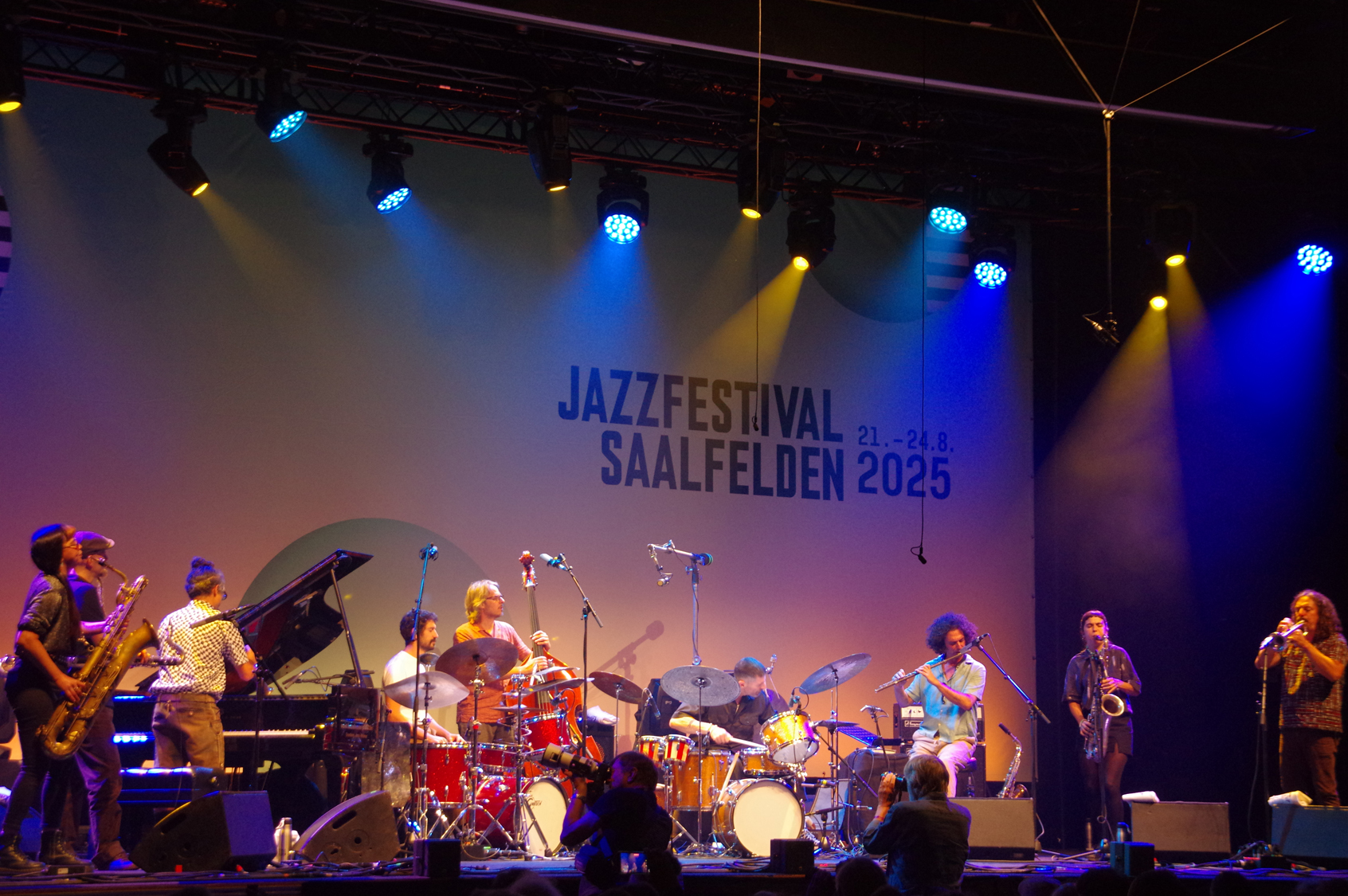
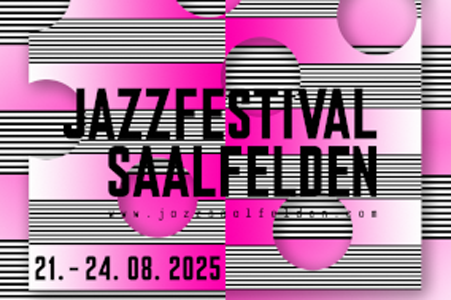
Jazzfestival Saalfelden
August 21-24, 2025
Saalfelden, Austria
Review by Ken Waxman
Photos by Susan O’Connor
Far from settling comfortably into middle age during its 45th annual iteration, Austria’s Jazzfestival Saalfelden confirmed during this year’s festival, which took place in late August, that it is constantly innovating. One indication of this is that the Europe Jazz Network presented the Saalfelden festival its 2025 Award for Adventurous Programming.
More importantly, concerts in this city of 16,000 people, located 70 kilometers south of Salzburg, swelled the population with a multitude of festival-goers on hand for the approximately 55 concerts that took place in numerous locations both on inside stages and in the open air, and featured international, European and Austrian players.
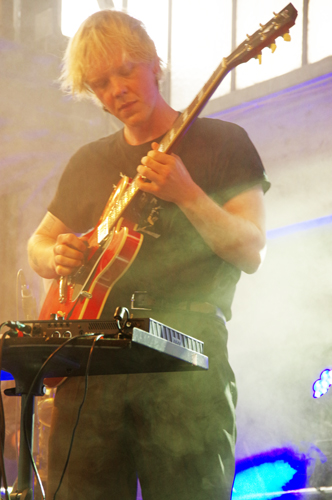
One concert that epitomized the festival’s admixture of ideas and style took place on the second afternoon at the Otto Gruber Hall, actually a bright and airy former machine shop. Known as Raw Fish, the group was led by Danish guitarist Teis Semey, and featured alto saxophonists José Soares from Portugal and Amalie Dahl from Denmark; American trumpeter Adam O’Farrill, and drummers Giovanni Iacovela from Italy and Jim Black from the US. Despite clouds of dry ice wafting on stage, the sextet played an unshowy set of Jazz -improv.
Moving confidently from andante to presto in broken octave expositions, the trumpeter’s heraldic blasts set up against saxophone riffs evolved in foot-tapping beats on top of the dual drummers’ heavy ruffs as the guitarist’s strings twanged and frailed. Often leading to group resolution, spaces existed so that the programmed impulses that characterized O’Farrill’s and Iacovela’s distinctive electrified pivots were obvious. Similar comparisons between Soares’ measured slurs and Dahl’s altissimo squeaks existed, especially at slower tempos.
This concentrated background allowed O’Farrill to slide between Latin and ballad inflections, confirmed Black’s ability to create thoughtful rustles as well as tough drum patterns, and Semey’s multiple strategies that ranged from relaxed jazz chording with a touch of flamenco to all-out hard rock flanges.
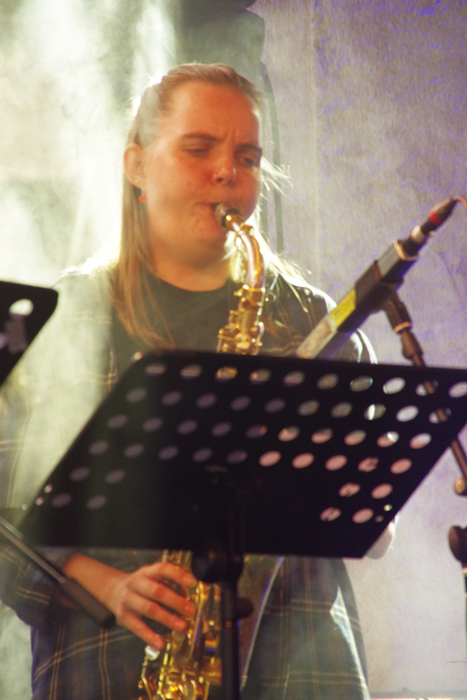
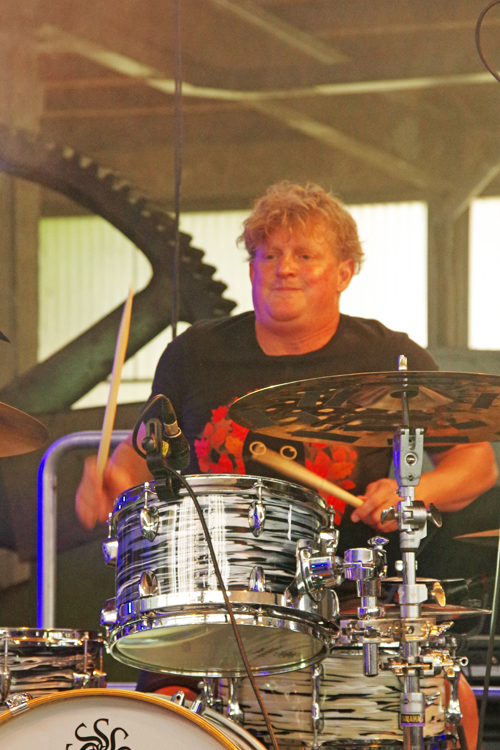
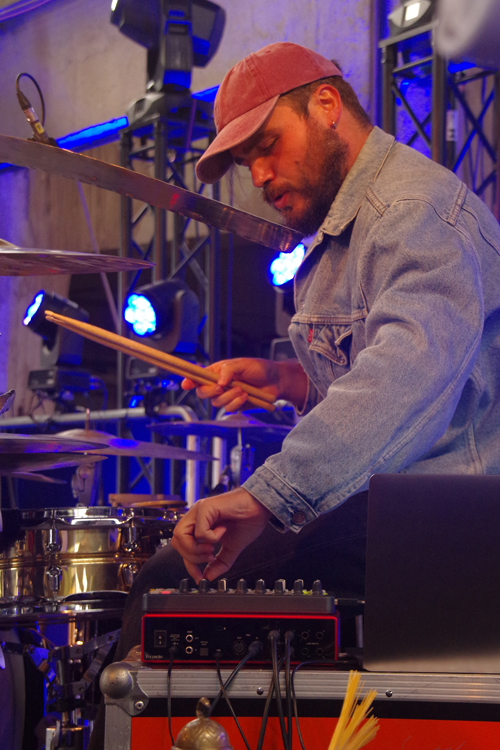
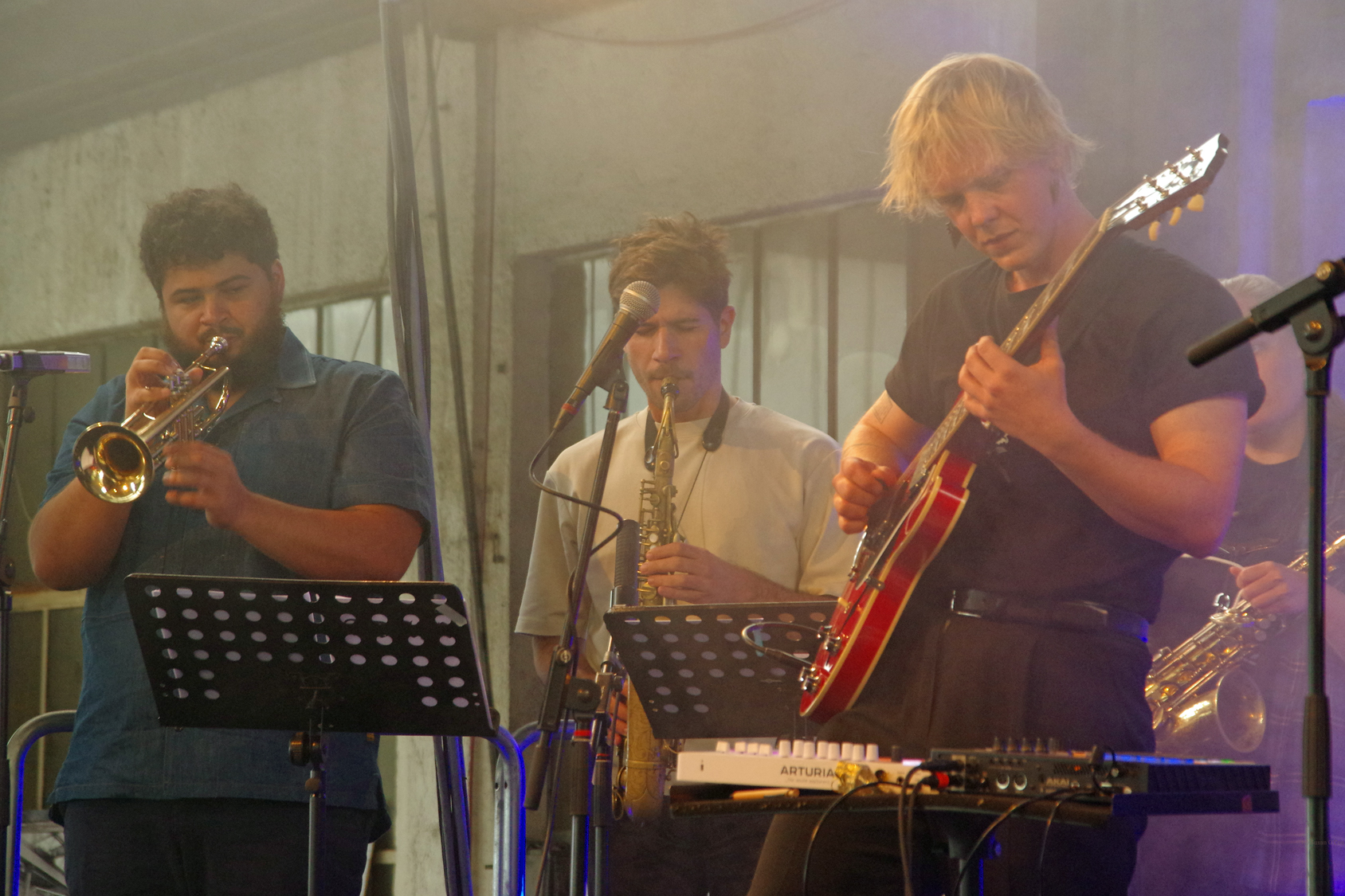
Like many of the other musicians, the Danish guitarist was present in other configurations on other days. A day afterwards, Semey and Soares were on the festival’s main stage in the city’s multi-tiered Congress Centre along with bassist Jort Terwijn and tenor saxophonist Jesse Schilderink from the Netherlands and South Korean drummer Sun-Mi Hong.
Named En Masse, the quintet was more relaxed and riffing than Raw Fish. That’s because Hong’s playing here focused on brush work for brief drumtop rubs, plus ruffs and press rolls that made common cause with double bass string slaps and tapping guitar fills. Quiet and unforced in the main, some of the more pleasant tunes could have been cop show soundtracks with floating alto sax lines, and muted up and down tenor sax adaptions. The program picked up in speed and strength as it evolved, with Semey’s wiggling organ-like chording and Soares’ extended and high-pitched reed smears and screeches standing out.
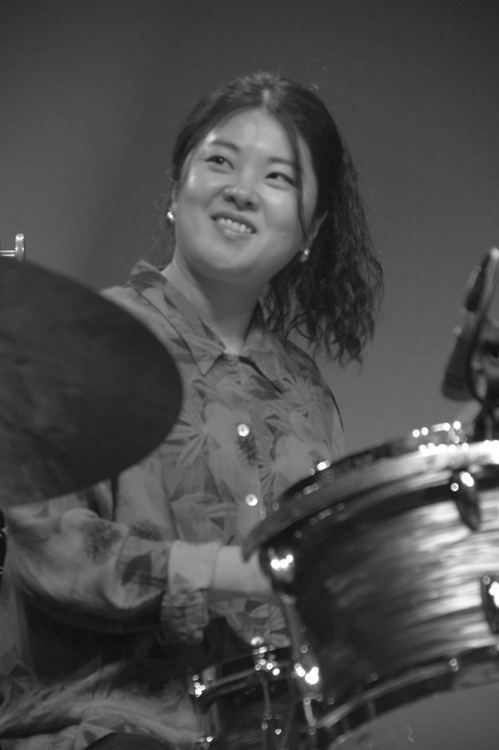
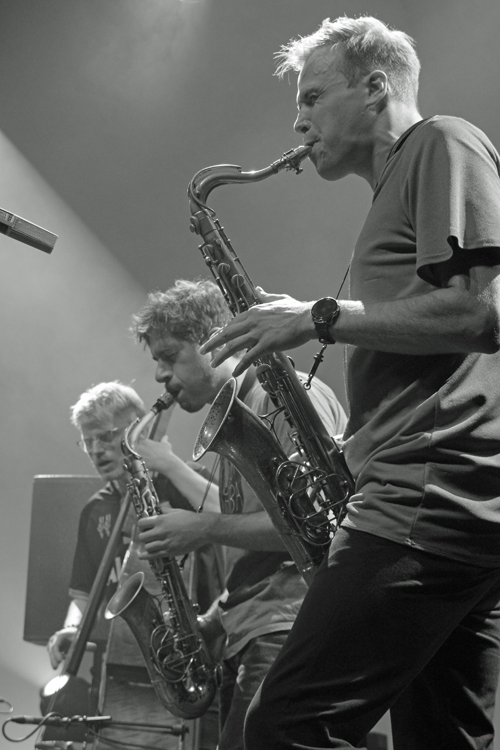
Semey’s festival opening day duo with Latvian Kirke Karja playing electric keyboard in the cramped space of the Buchbinderi Fuchs, a repurposed book publishing house, was simpler. Attaining interactive strength and liveliness only towards the finale, it seemed that one player was usually comping behind the other rather than engaging in a dialogue. The resulting floating Nordic largess was only briefly pierced with some jagged, flamenco-like stabs or a series of swift runs from the guitarist, and those times the pianist created a bass-heavy stentorian tone or darting tremolo emphasis that contrasted nicely with Semey’s narratives. With keyboard shuffles and guitar chord reflection emphasized, a nearly hypnotic mid set display of dual electric fissure was notable, but ended too quickly.
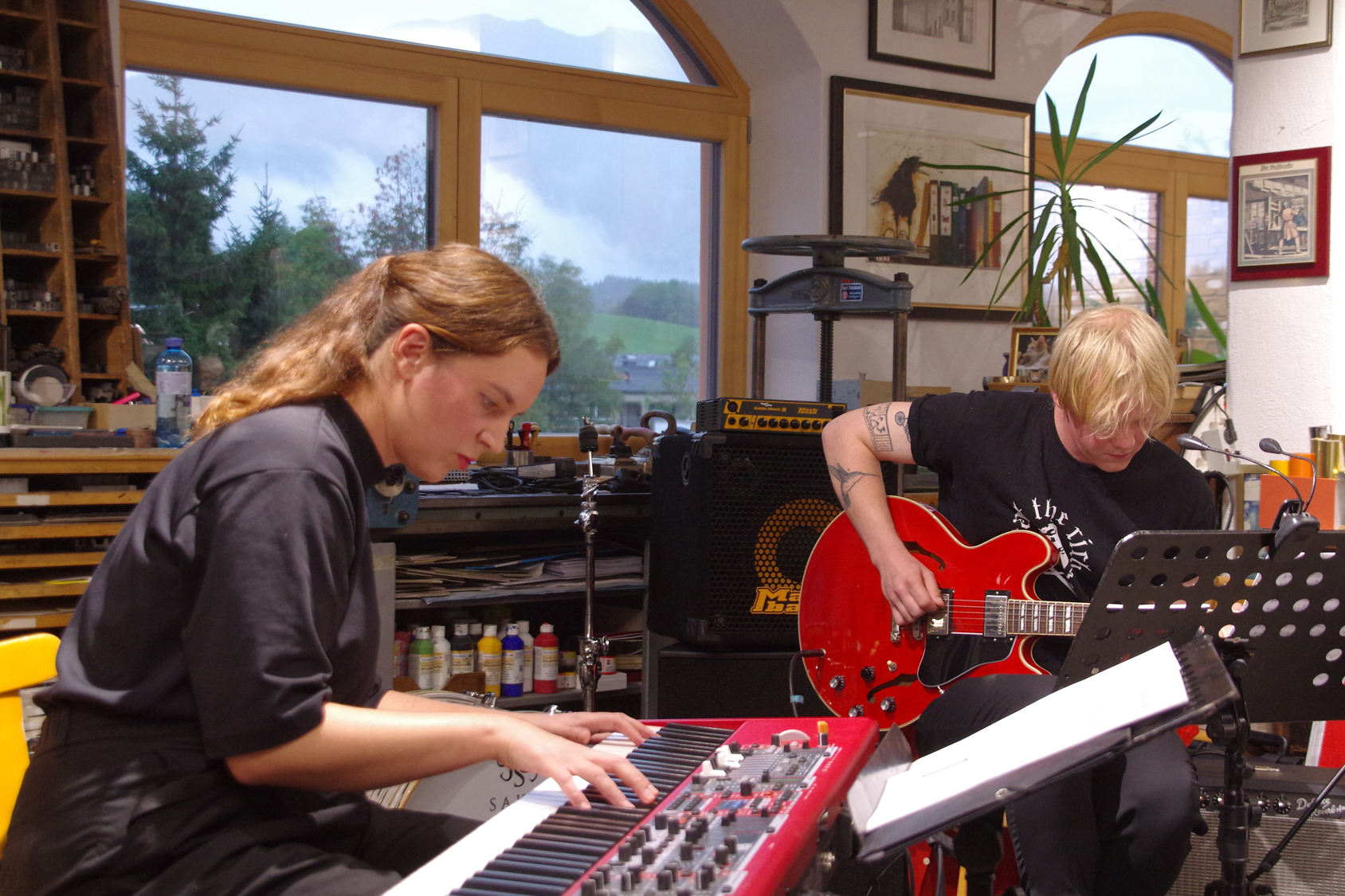
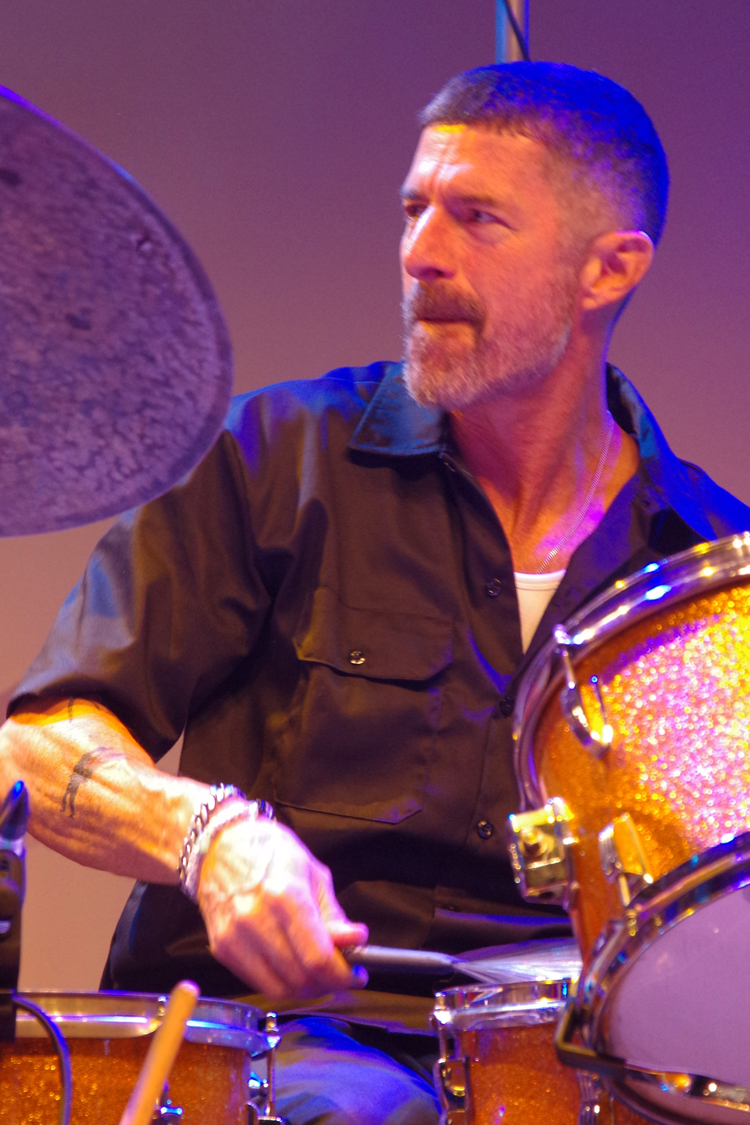
Another fine instance of multinational musical cooperation took place on the main stage on the festival’s third afternoon. Led by Austrian drummer Alfred Vogel, the Bezau Beatz Orchestra of Good Hope was made up of Argentineans: tenor saxophonist Camila Nebbia, baritone saxophonist Sofia Salvo, pianist Leo Genovese and bassist Demian Cabaud; Portuguese: trumpeter Luis Vicente, alto saxophonist/flutist João Pedro Brandão and drummer Pedro Melo Alves, plus Swiss bass clarinetist Lucien Dubuis.
With five horn players, counterpoint was frequent with saxophone timbres facing bass clarinet slurs; or the three saxophonists working up to a climax, only to be challenged by flute peeps or the trumpeter’s squeezed triplets. Most of the time Vicente’s slick portamento soared over the others, although occasionally brass textures united with higher pitches notes from the flute and the reeds’ elevated registers.
Droned pulses were projected from tandem double bass and baritone saxophone vamps while string stops were intensified with keyboard clipping. While such soloists as Nebbia illuminated the program with harsh squeaks and emphasized doits, percussion discussion was the focal point. With an extended kit Alves emphasized bongo pops and rim shots, while Vogel’s tempo changes and expansions come from a conventional drum set. The climax of the set was an extended vibrating puff from all involved.
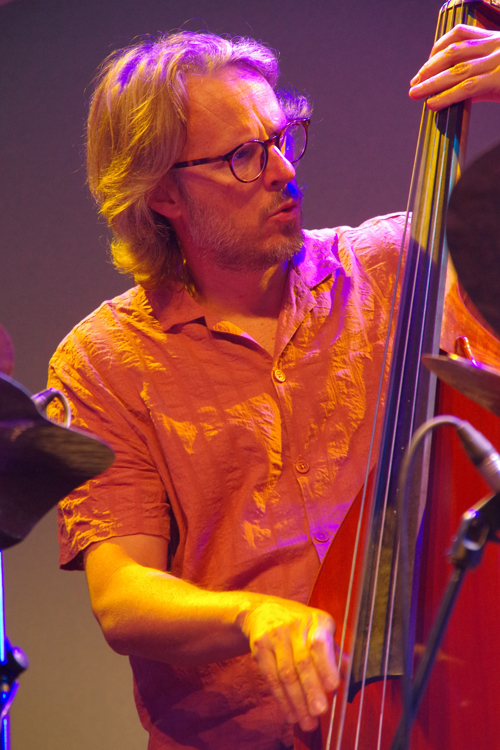
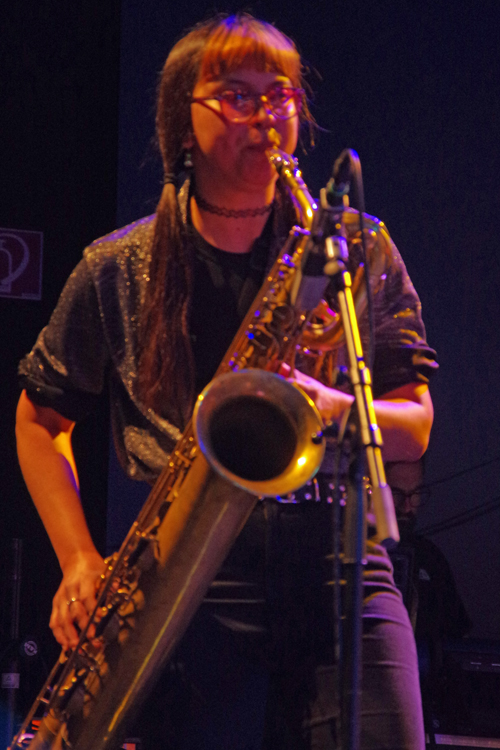
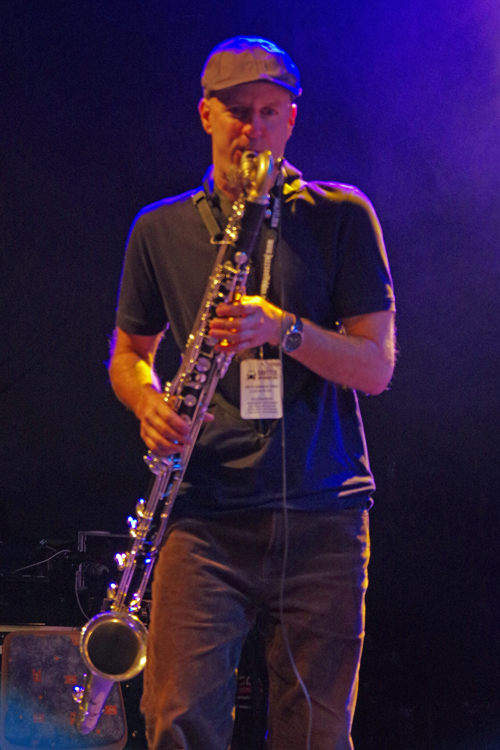
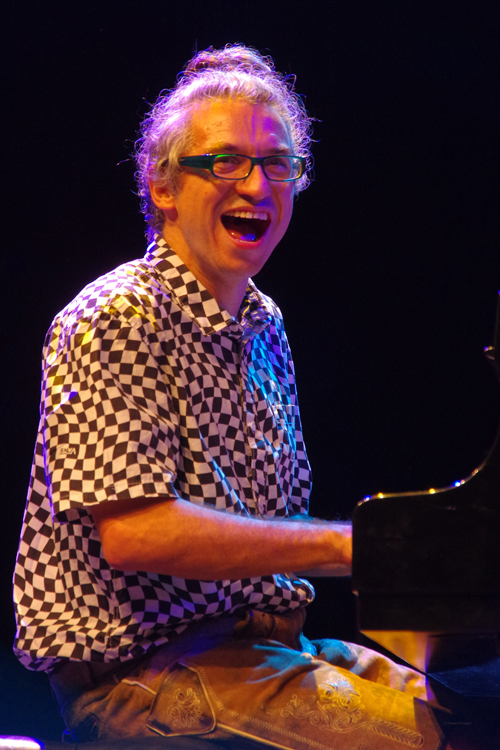
As Eyes to the Sun, three of these players offered a stripped-down version of that large scale improv at the Nexus club space on the first evening. Joining forces were tenor saxophonist Camila Nebbia, drummer Alfred Vogel and pianist Leo Genovese, who also revealed a hitherto unexpected soprano sax talent. Throughout Nebbia contorted her seemingly limitless reed production into overblowing, multiphonic squeezes, blaring shrieks and toneless breaths.
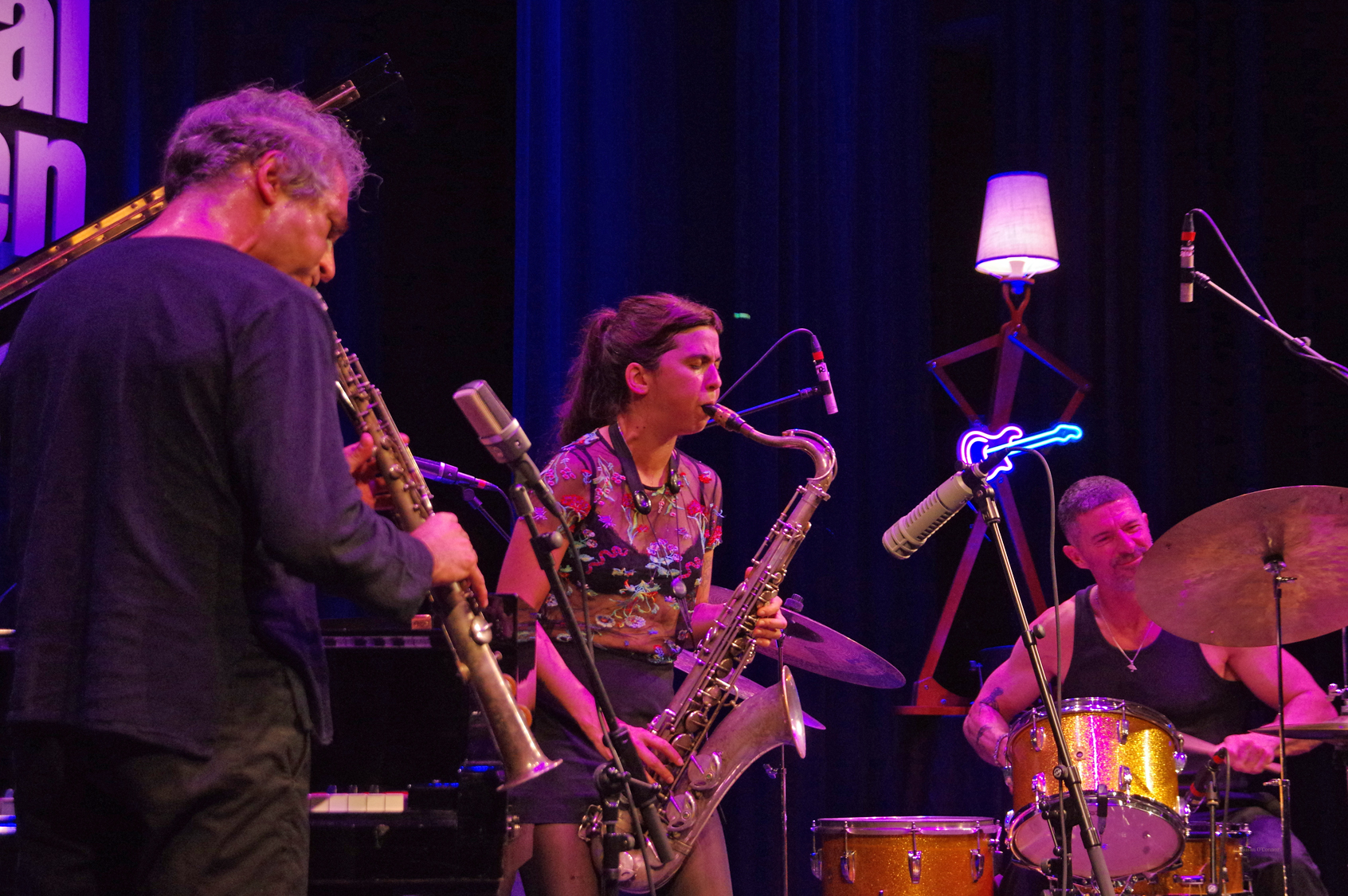
Vogel responded with paradiddle pops, slapping three sets of cymbals, screeching a drumstick along a cymbal top, and rattling drum tops while torquing the beat from allegro to prestissimo. The pianist’s contributions initially involved speedily sliding his fingers across the keyboard or sudden staccato accents that turned to two-handed timbral examinations. Later he added a soprano saxophone from which he produced stinging whistles and nasal squeaks that interlocked with the tenor saxophonist’s honks and slurs. Finally, as Vogel turned from nerve beats and hand slaps to bass drum stresses, Nebbia shoved a plastic bottle into her horn’s bell for additional tone pressure as the three connected in a thickened finale.
Away from the Bezau Beatz Orchestra of Good Hope, Portuguese drummer Pedro Melo Alves was able to express his own ideas at the Nexus on Saalfelden’s second afternoon with his HIIT trio filled out by Italian pianist Simone Quatrana and bassist Andrea Grossi.
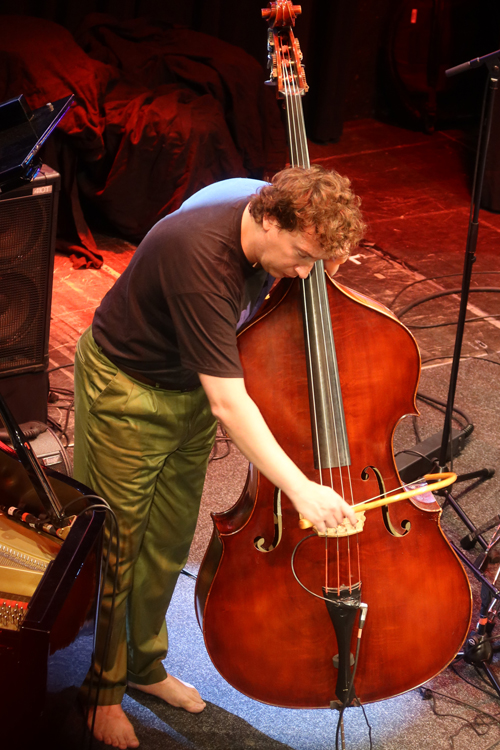
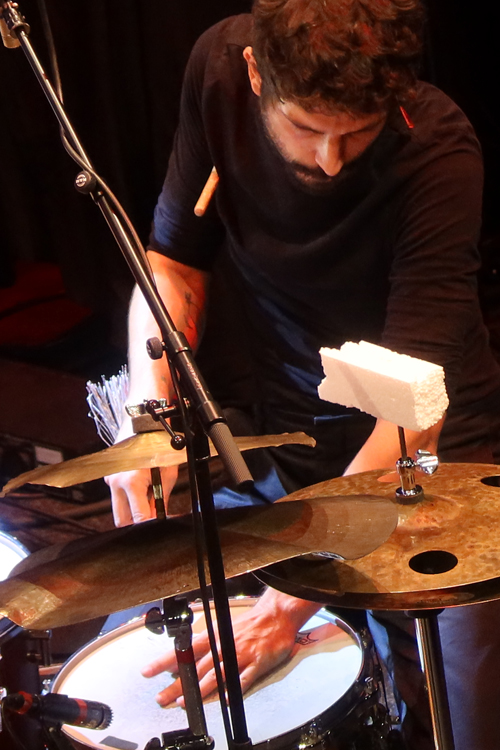
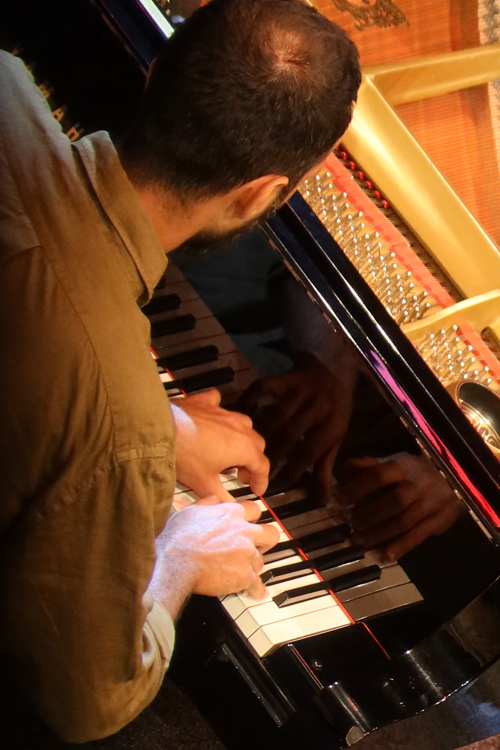
Subverting the piano-and-rhythm trio concept the three worked in unison, with the drummer directing the improvisations more than the pianist. His beat alterations involved such procedures as adding textures by striking a miniature wooden box placed on drum tops, whumping mallets on the snares or cymbals for added resonance, or shimmying chains in the air. These percussion tropes evolved alongside squirming or pedal-point piano chording as well as sonorous double bass sweeps. At times Grossi’s arco shrills took on near-human vocal timbres.
Each instrument introduced a tune or produced a secondary sometimes contrapuntal melody, which in some cases involved more percussive emphasis from Quatrana as well as Alves, or conversely slinky keyboard intensity and multi-note extensions which embellished standard accompaniment from the other two. A small stick Grossi placed among the bass strings added distinctive rattles, while his string-rubbing intensified group cooperation. Still these amplifications didn’t prevent the trio from creating subtle swing and melodic ballad inferences.
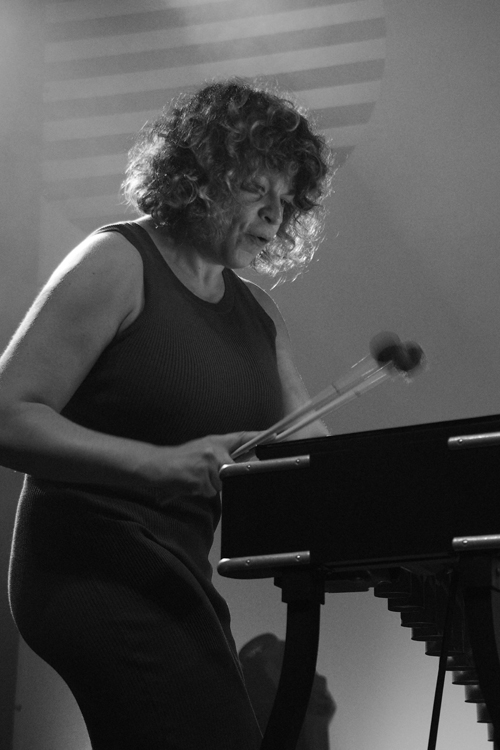
With percussion as a leitmotif, two self-contained units featured on the main stage on two different nights were also able to project a strongly defined identity. On the second night Mexican-American vibraphonist Patricia Brennan and her working band presented material from her latest disc. Along with the multi-mallet skills of Brennan, the rest of the all-American combo featured sopranino and alto saxophonist Jon Irabagon, tenor saxophonist Mark Shim, trumpeter Adam O’Farrill, who had played earlier that day with Raw Fish, bassist Kim Cass, drummer Dan Weiss and percussionist Keisel Jimenez. Two nights later on the same stage was the international sextet of drummer Sun-Mi Hong, who the previous day had played with En Masse, another of Semey’s bands.
Using four mallets and an emphasis on pumps and swirls, Brennan was in constant motion throughout the set, as well as adding resonating metal accompaniment for the others, and speaking more than other performers.
Weiss and especially Jimenez alternated between comping and soloing, with the percussionist’s slick and echoing cadences producing a rhythmic inducement that wasn’t quite Latin, but wasn’t straight-ahead Jazz either, especially during his super-fast conga solos. Weiss’s hard raps cemented the base for the soloists, as did Cass’s thumps, although he showed he could play more than rhythm when he provided a measured intro to one tune.
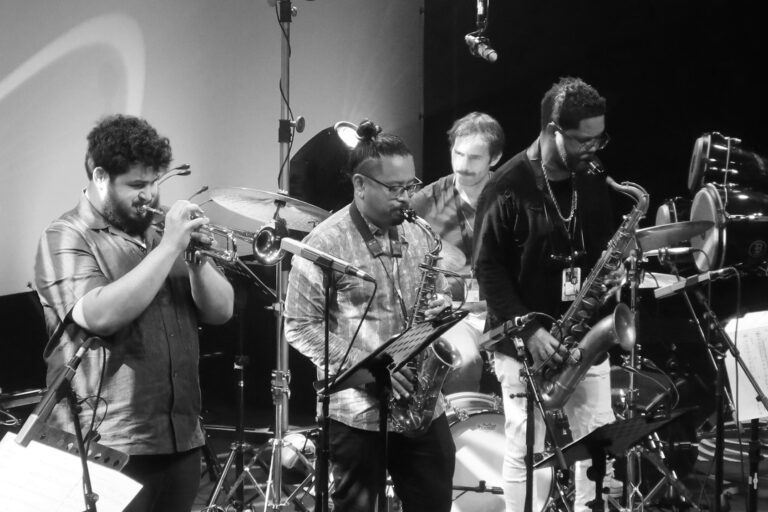
With the reeds mostly riffing, it was O’Farrill and Brennan who created the most spectacular solos on top of the others’ churning connections. Seemingly inexhaustible, with a ready supply of triplets, the trumpeter propelled tones that took on Mariachi colorations when not attaining Dizzy Gillespie-like heights.
Aggregating the sustain, the vibist made canny use of her instrument’s pedal to produce lucid ringing tones, frequently consolidating aluminum bar swishes and pops into a crescendo of directed textures. Dynamic when needed; passages of a capella single note slides and shakes confirmed that she was also able to project empathetic sentiments.
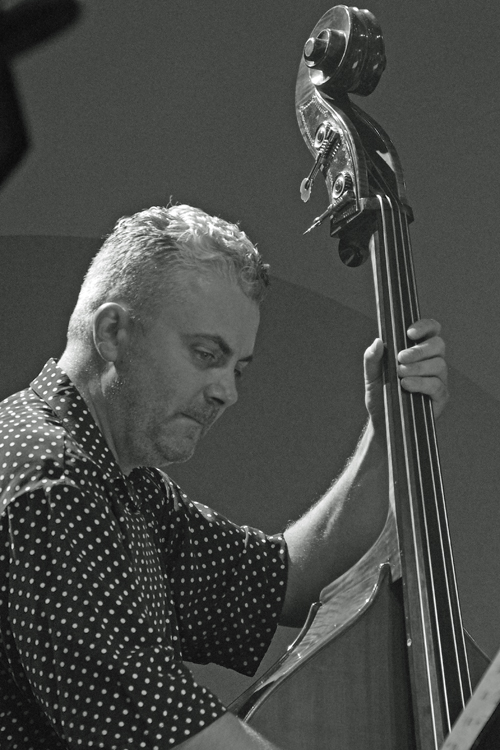
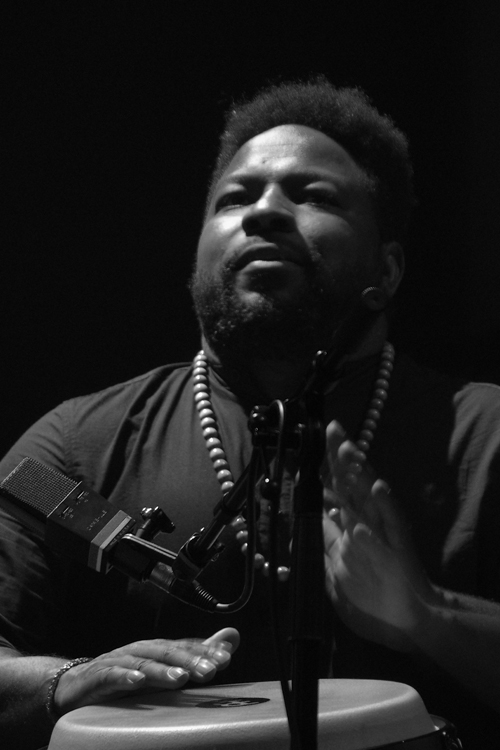
Sentiment was the least likely adjective to be applied to the ﺪﻤﺣأ [Ahmed] quartet, whose August 23 mainstage set was an almost hypnotic instance of concentrated rhythmic improvisation. With sonic architecture consisting of continuously intensifying pressure and power, the realized program connected the sonic impulses from pianist Pat Thomas and alto saxophonist Seymour Wright from the UK, French drummer Antonin Gerbal and Swedish bassist Joel Grip.
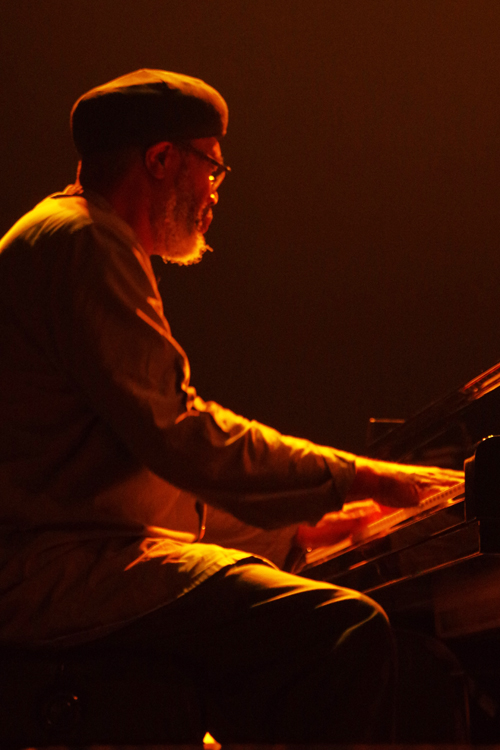
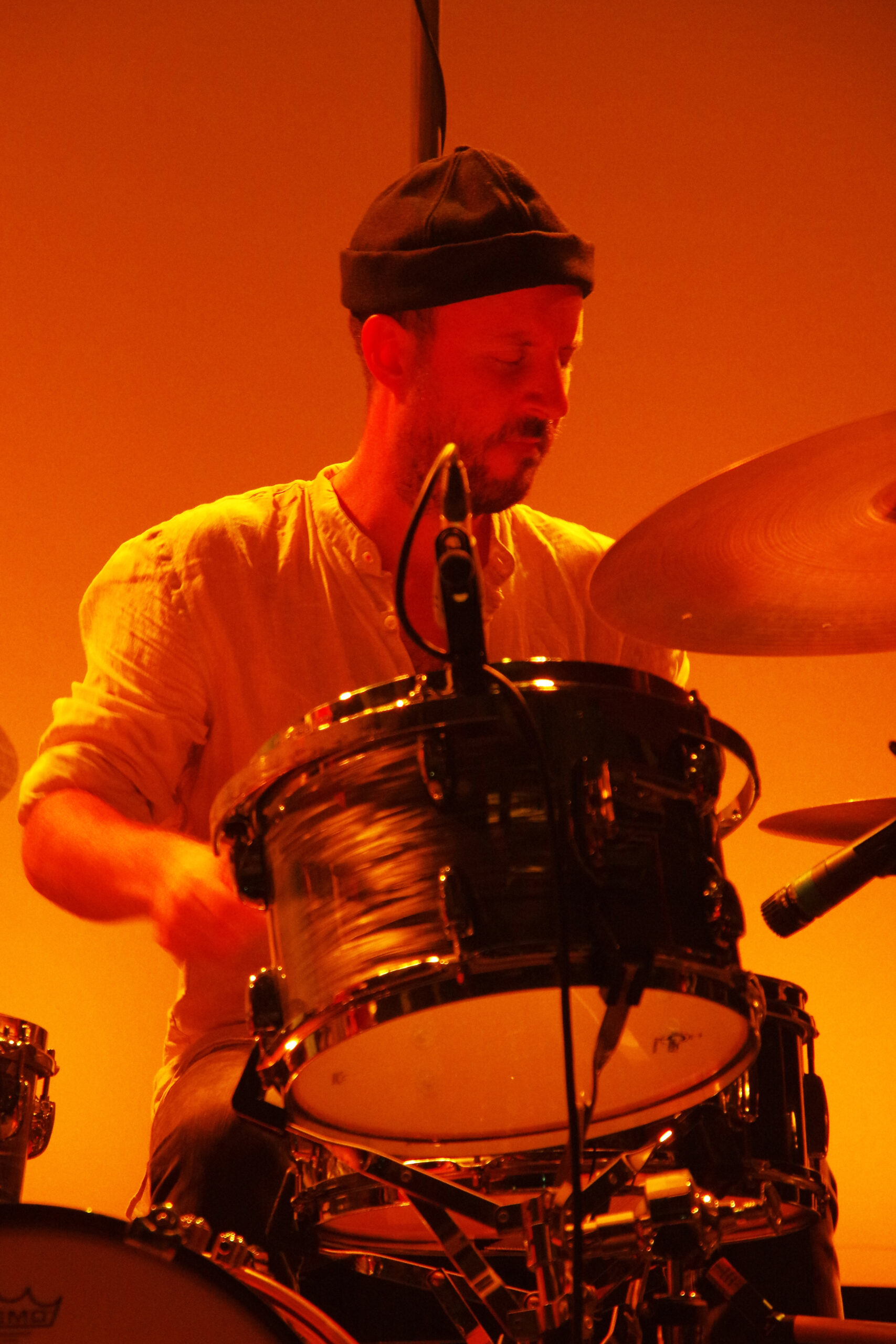
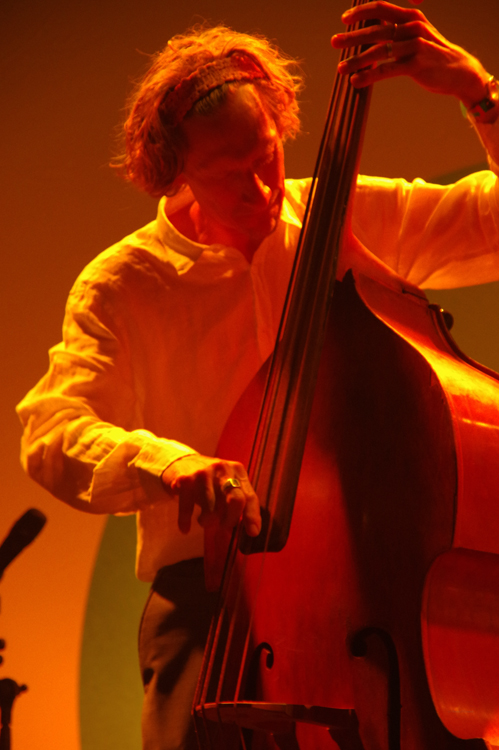
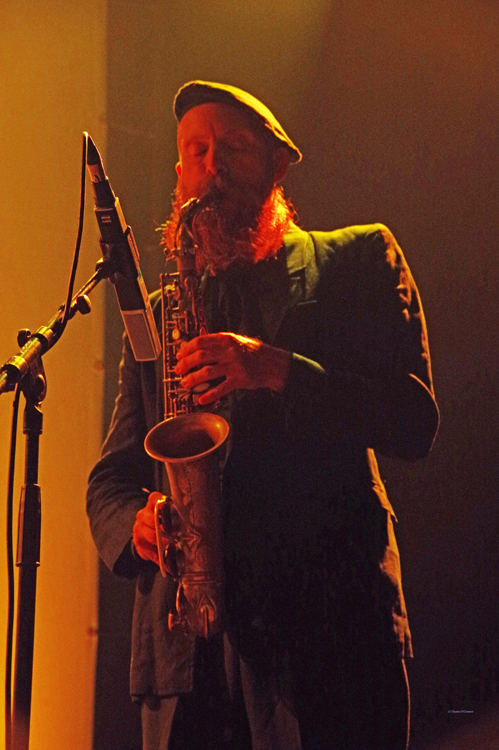
Hitting a groove that was nearly static but nevertheless throbbing, the quartet’s constantly repeated phrases were as amaranthine as they were animated. Resembling programmed loops, Wright’s hard reed-blowing undulated as if on permanent repeat, as Grip’s nuanced string thumps, Gerbal’s aggressive pops and cymbal shakes, plus Thomas’ two-handed keyboard slaps were perfectly coordinated as they steadied the accompaniment. Even as the saxophonist upped his pitch from mid-range to altissimo to sopranissimo and thinned his tone, a mid-set torque from presto to prestissimo didn’t upset the group connection. It remained aggressive and allied even as the saxophonist’s output slid even further upwards to split tones and squalls. Thomas varying his comping to brief truculent phrases, and Gerbal punching his drum tops signalled the finale as Wright’s bullet-train speed cries and note-bending spetrofluctuation stopped as unexpectedly as they began.
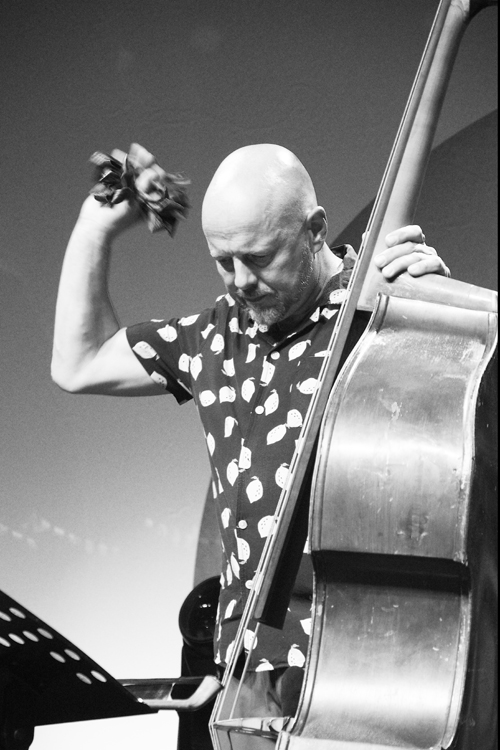
Two animated Scandinavian bands that played at nearly opposite ends of August 22’s mainstream program were Weird of Mouth and (Exit) Knarr. The first was Danish alto saxophonist Mette Rasmussen’s trio with Americans: pianist Craig Taborn and percussionist Ches Smith. Ending the night’s program was Norwegian bassist Ingebrigt Håker Flaten’s (Exit) Knarr with fellow Norwegians, saxophonists Amalie Dahl (alto and baritone) and Karl Hjalmar Nyberg (tenor) and drummer Olaf Olsen. Polish pianist Marta Warelis and American guitarist Jonathan F. Home rounded out the sextet.
Håker Flaten and Warelis set up the initial groove which was then amplified with saxophone squalls that turned to huffing slurs from the baritone and tongue slaps from the tenor. With simple riffs from the guitar and bass slaps that maintained linear expression, the sextet varied its sound suggestions from that of marching band to machine head, while hardening and thickening each subsequent tune.
Olsen’s thick beats and Home’s guitar flanges sometimes moved the group close to Rock territory, but Warelis’ precise emphasis of different parts of the keyboard, and Håker Flaten’s arco swipe and at one point bell-shaking, along with other band members’ sympathetic chording ensured metal intensity didn’t overwhelmed meditative improvisation. Rasmussen, who was at one point an (Exit) Knarr member joined the band for its final number, although except for amplified reed power it didn’t deviate from what preceded it.
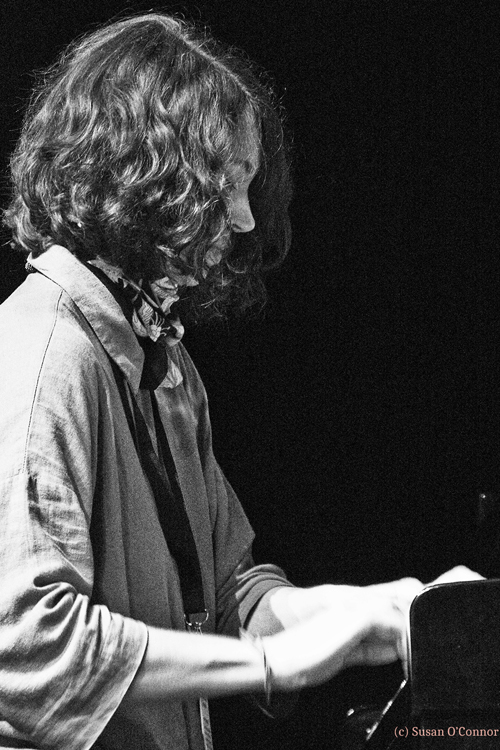
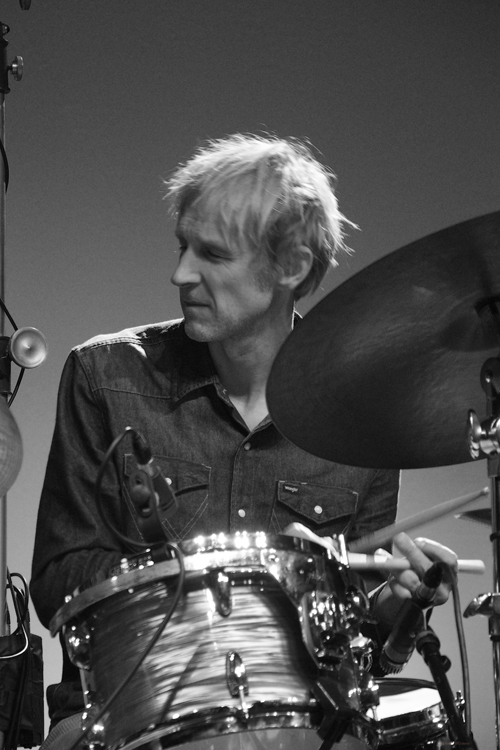
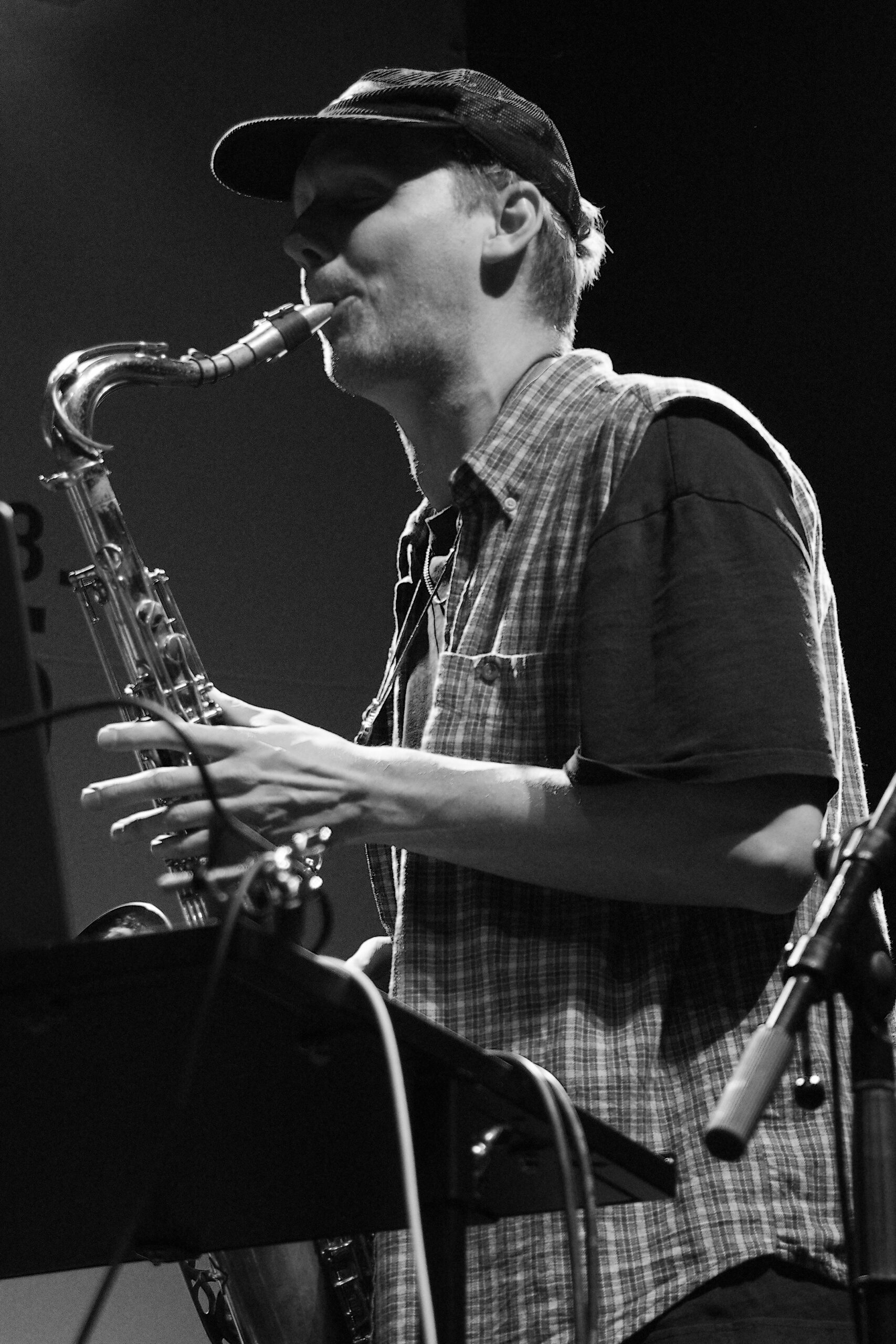
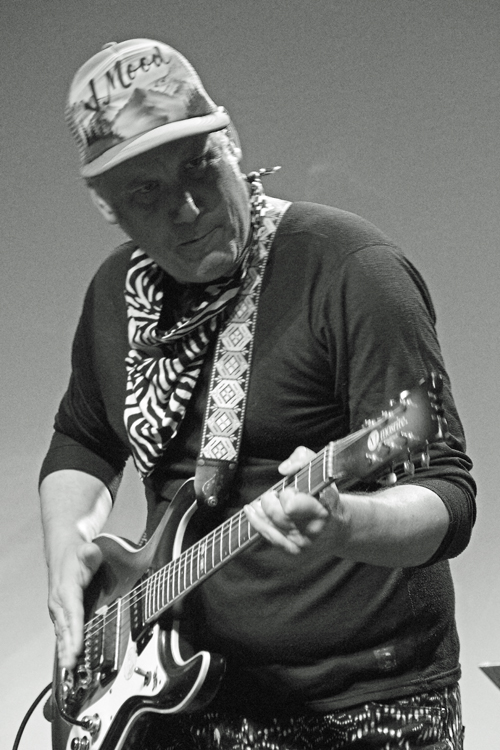
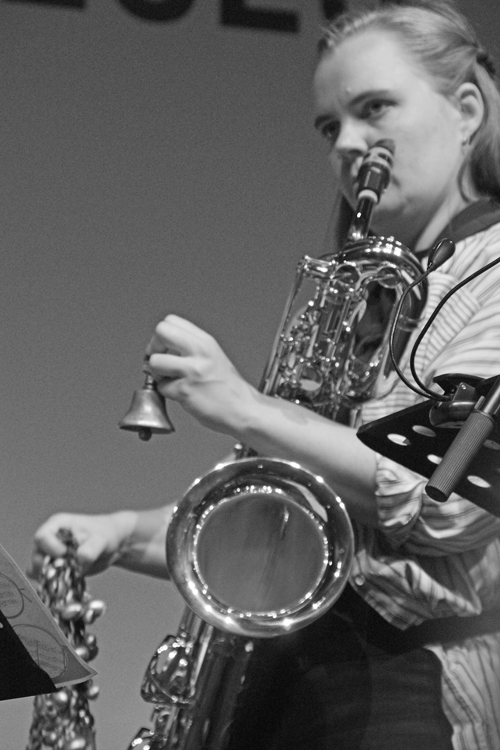
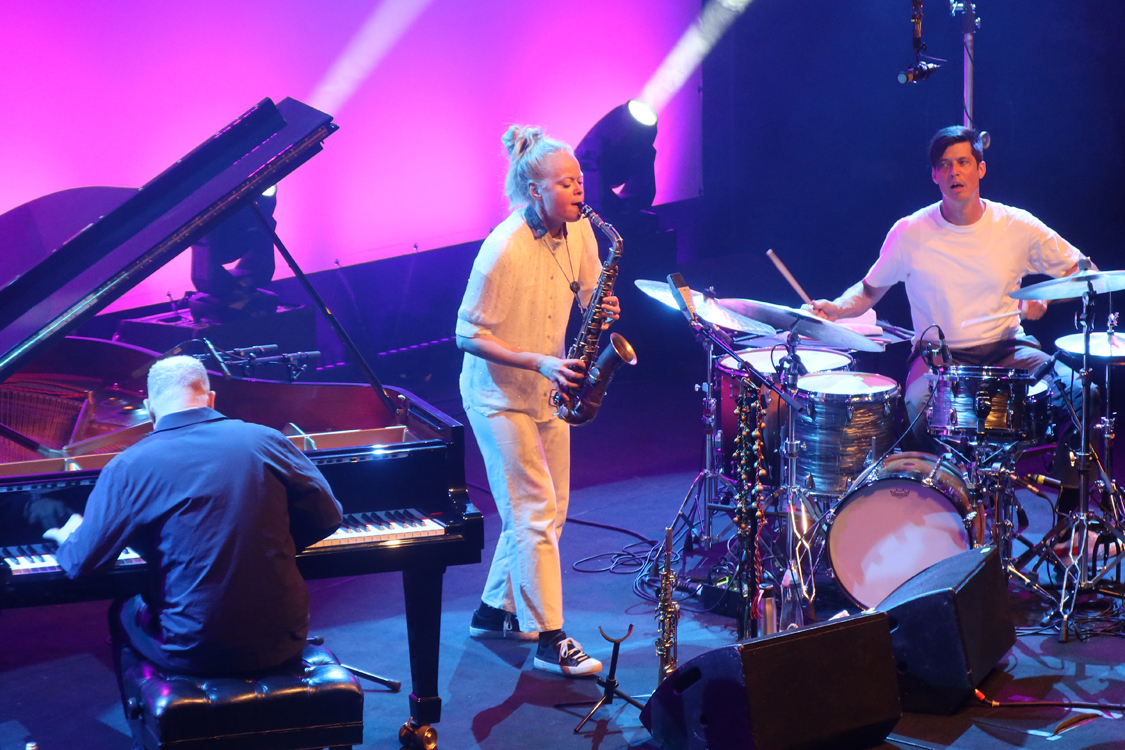
However, with controlled comping plinks from Taborn and constant rumbles and rattles from Smith it was chiefly Rasmussen who held Weird of Mouth’s centre. Her cadenzas projected aleatory overblowing, and varied between high pitches, descended scoops and long-lined shrills. Backed by the drummer’s pops and recoils, it became obvious how she had fit into Håker Flaten’s band. Energetically moving one step ahead of the accompaniment she used tongue slaps and shrills not only to careen to higher and higher pitches, but also to expose three varied reed sonorities at once.
Taborn’s worrying of the piano’s inner strings to produce additional timbres, and Smith’s rumbles and ruffs may have directed Rasmussen towards pushing toneless air through her horn, or rappelling thick notes down the scale, but by circular breathing and triple-tonguing she ascended to shrieks that were speedy and nearly ear-splitting. Taborn added some distinctive string plinks, and Smith timed press rolls, but Weird of Mouth was mostly the saxophonist’s show.
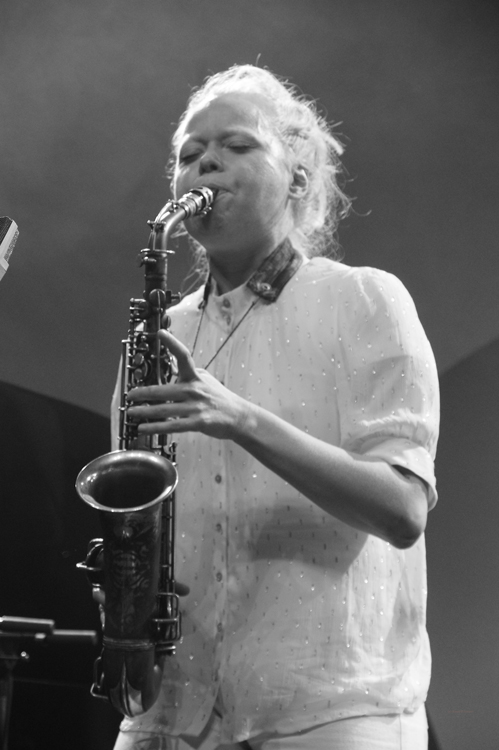
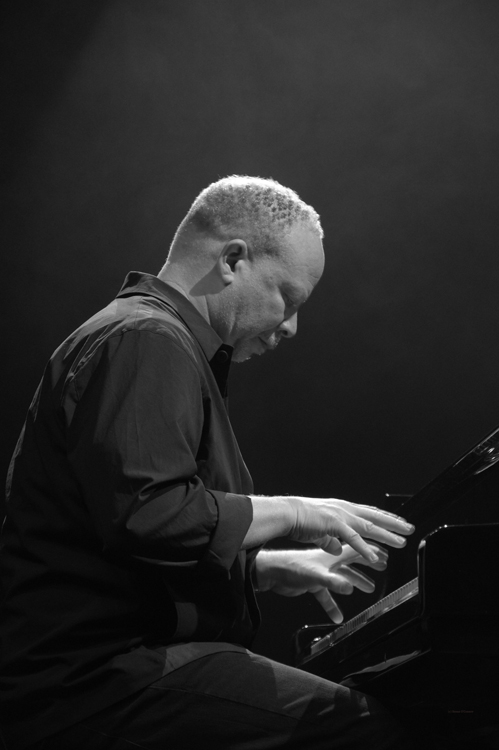
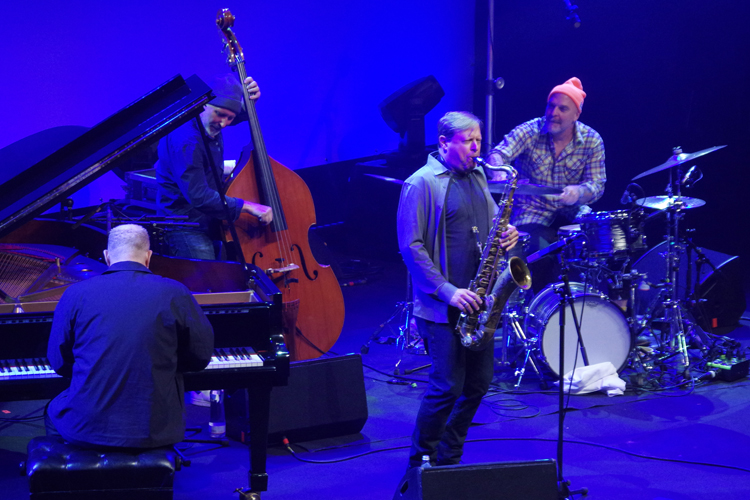
Taborn also helped wind up Saalfelden’s official program Sunday night when he played with drummer Dave King and bassist Reid Anderson as the Bad Plus, alongside tenor saxophonist Chris Potter. But while there was no question of the professionalism in the quartet and its friendly rapport with the audience, the resolutely mainstream orientation of the band seemed a little out of step with the rest of the featured performances.
A decided subset of the festival were notable concerts built around unconventional drumming, two of which featured German Christian Lillinger. The other was a short improv at Nexus on the festival’s second afternoon involving Kurdish-Canadian Kasho Chualan using electronics and a prepared piano, with Austrian Lukas König playing drums and amplified cymbal. Building on differing wave-form throbs, the pianist often used a mallet on her instrument’s strings and keyboard. She also repeatedly pressured single keys as well as using a drumstick to add resonance from a standalone triangular metal sheet that looked like an overgrown cheese grater. König’s response in kind was to deftly tap on miniature cymbals and scrape larger ones before introducing timed paradiddles and ruffs. Climax came when prerecorded phrases in English and Kurdish resonated from programmed electronics to intersect with bell and cymbal shakes.
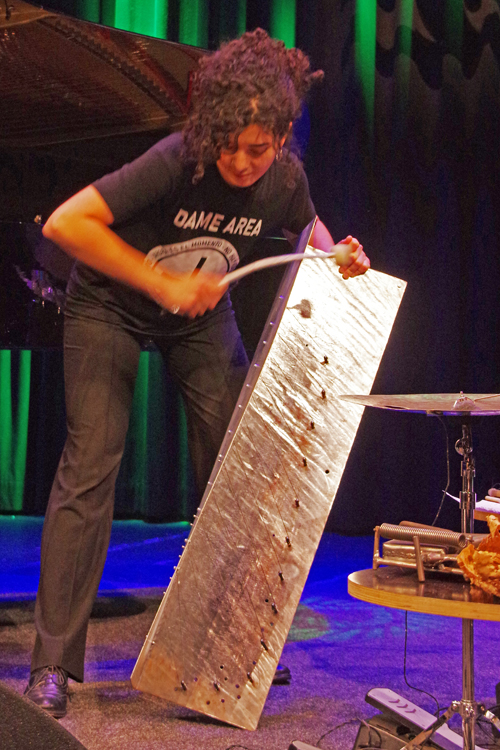
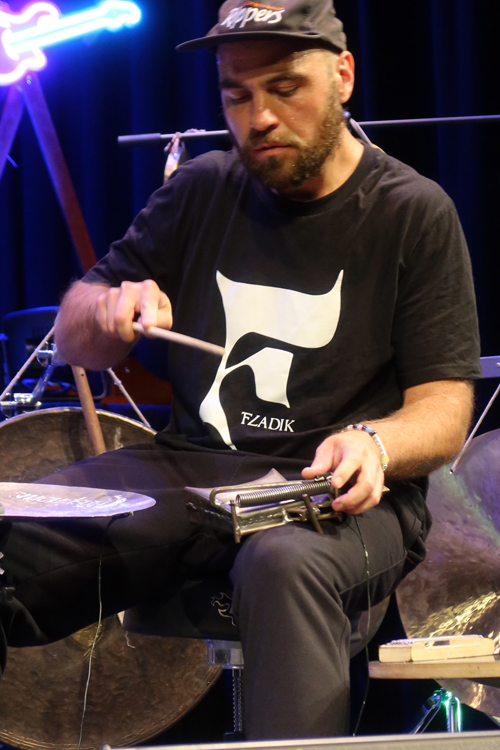
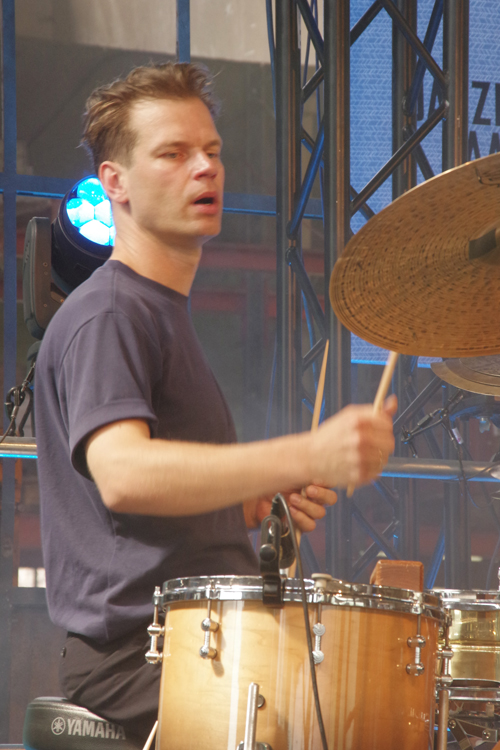
If König’s percussion playing was minimalist, then Lillinger’s was definitely maximalist as he proved on Sunday afternoon. In the spacious Otto Gruber Hall he was matched with a trio of Austrian horn players in a band called Nothing Causes Anything: alto saxophonist Yvonne Moriel, Alex Kranabetter playing trumpet and electronics, and Vincent Pongracz on bass clarinet and electronics.
With Lillinger setting the pace with shuffles and ruffs, the others gradually sped up the selection with bass clarinet honks, trumpet flutters and tongue slaps as well as key percussion from the saxophonist. Using rim shots and cymbal clanks to maintain a strong beat, Lillinger also loosened up his accompaniment when the tunes settled into more relaxed interface.
Kranabetter often doubled his output by adding live processing to his parts, as Pongracz did the same with clarion bites processed in tandem with his woody squeals. Creating a melded midpoint between rough and rounded timbres, the quartet eventually reached a climax of horn slurs and tongue stops outlined by metallic percussion pops and bags.
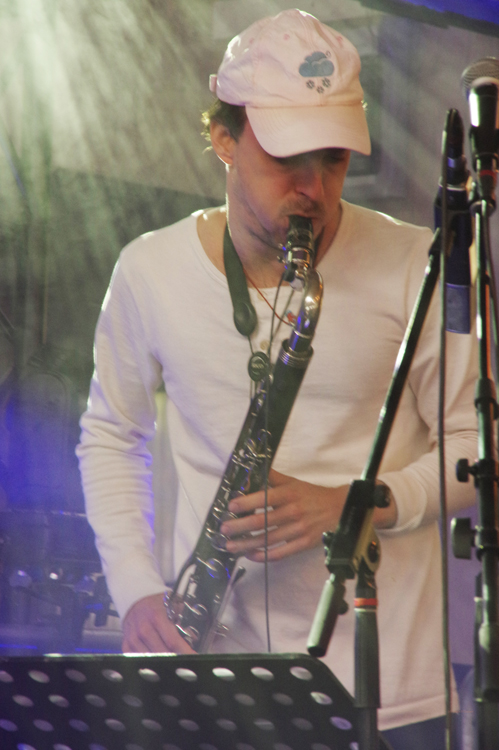
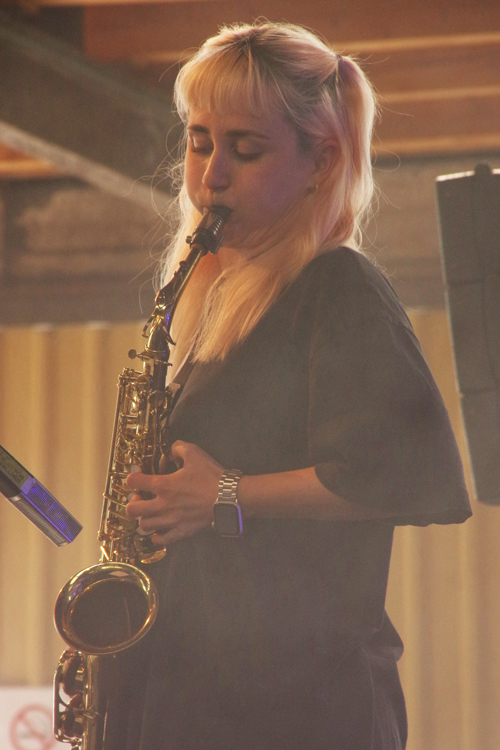
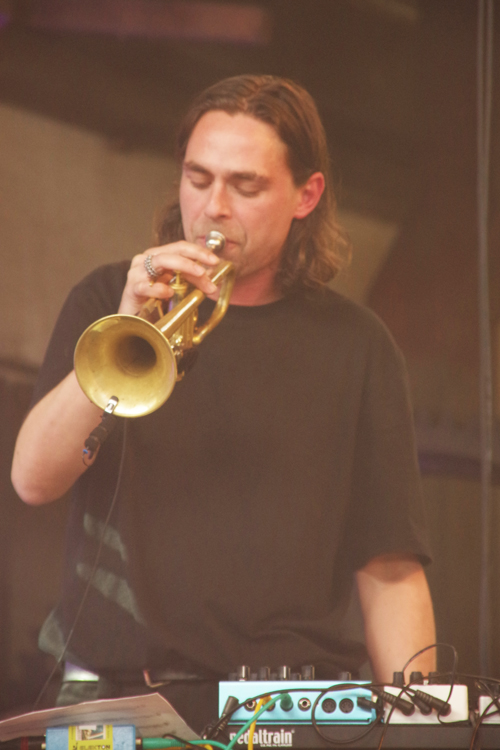
A few hours later on the main stage, Lillinger inserted his drum set into a trio otherwise consisting of chordal instruments. Kale Kalima of Finland played electric guitar, while Argentina’s Leo Genovese brought out his keyboard arsenal of electric piano, organ and mini-Moog. Although instrumentation resembled that of the traditional organ trio, the guitarist’s multi-fingered flanges and the keyboardist, who also played in Alfred Vogel’s bands, was more interested in projecting freedom than funk. Using piano glissandi, voltage stops and timbres seeping from the other keyboards, Genovese met Kalima’s treble guitar runs and pointed finger-tip echoes with equal aplomb, and was also able to snake up the scale with contrapuntal comping as the guitarist created narratives that touched on Metal, country and Jazz.
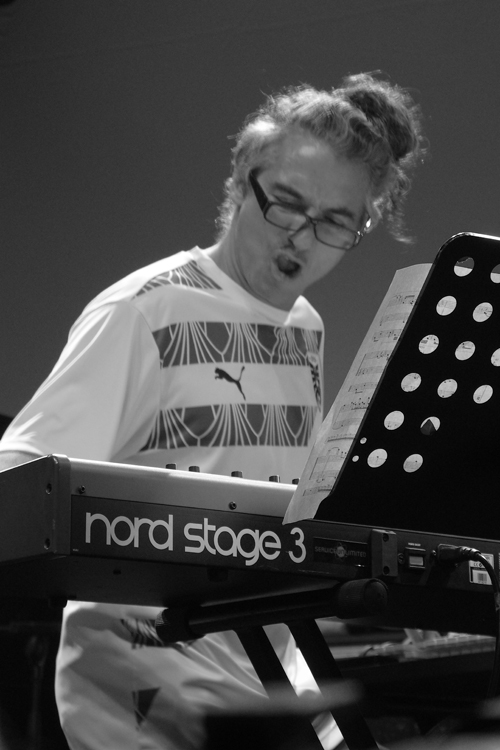
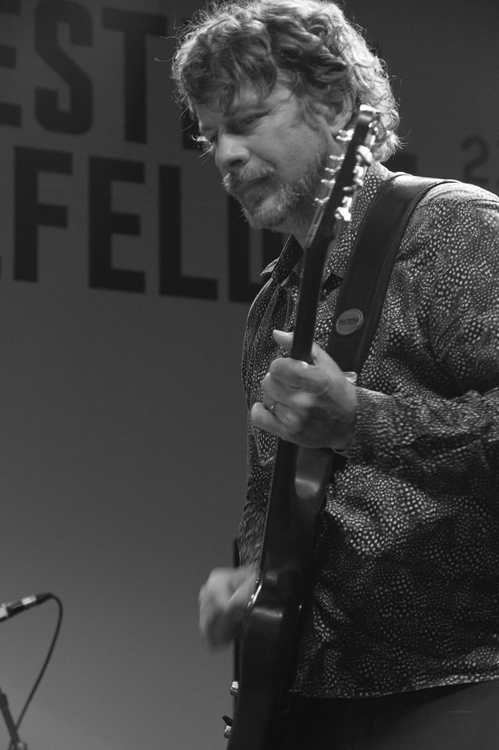
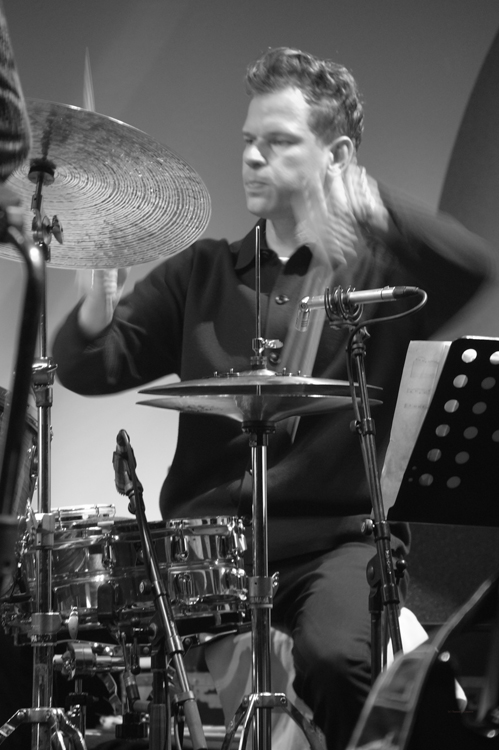
Drums were also front and centre at Nexus on the first evening during a performance by German percussionist Max Andrzejewski with a string quartet in a program entitled Summen. There was no questioning the technical skills of the Ensemble Resonanz members, however among violinists Barbara Bultmann and Swantje Tessmann, violist Neasa Ní Bhriain and cellist Lea Tessmann, there often seemed a disconnect between the string players who were reading the score, and the measured pops, bumps and clip-clops from the drummer.
The sparse percussion accompaniment meant that while the strings were continuously in sync, Andrzejewsk’s more outré sounds such as wood-block pops, bow-sawing on a cowbell, or vocalizing outer space-like noise through a megaphone appeared distant. Although string swipes and sul ponticello emphasis was occasionally heard, it appeared that the string group’s modulations become gentler each time the drummer’s press rolls or ruffs became more aggressive.
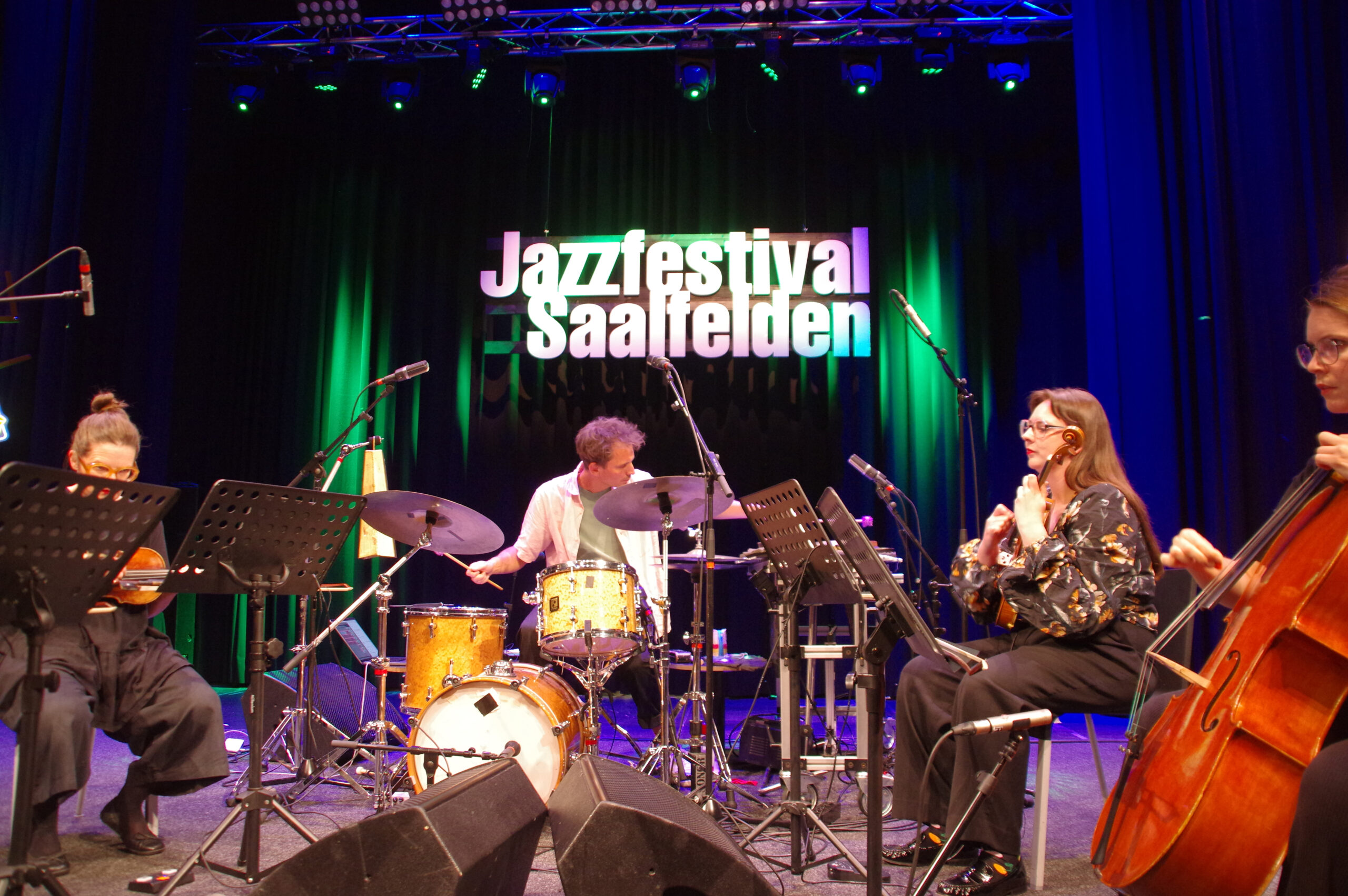
Another intersection that was intriguing, but may not have reached its full potential, took place on the mainstage Saturday afternoon with Laura Jurd’s Rites & Revelations.
This performance of folk-like material matched the UK trumpeter with Austrian bassist Ruth Goler, Irish fiddler Ultan O’Brien, and two Scots, drummer Corrie Dick and guitarist Tara Cunningham. Jurd’s busy flutters seemed to fly outwards with asides that were halfway between fusion and freylekhs. This frequently intersected strangely with the C&W and rock inflected textures expressed by double bass slaps and guitar pressure. Other times the trumpet’s brief brass yelps were doubled by violin and guitar licks, especially as the group picked up speed. However, even when the group segued into “St. James Infirmary”, Jurd’s choked gutbucket tone backed by clipping strings soon pivoted back to a jolly portamento narrative.
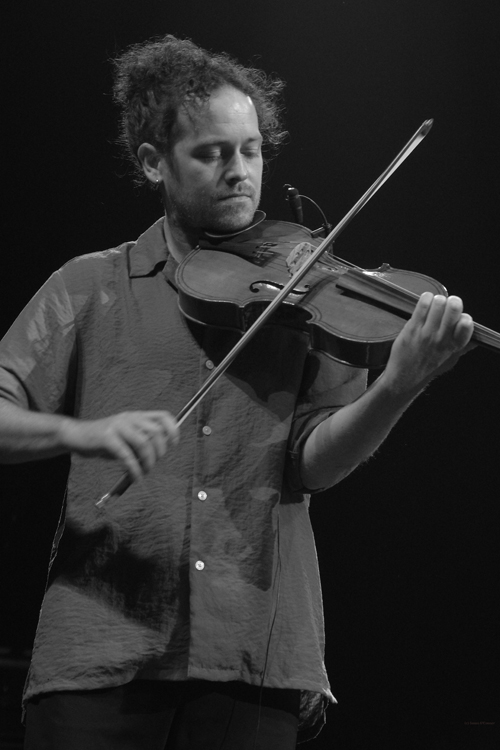
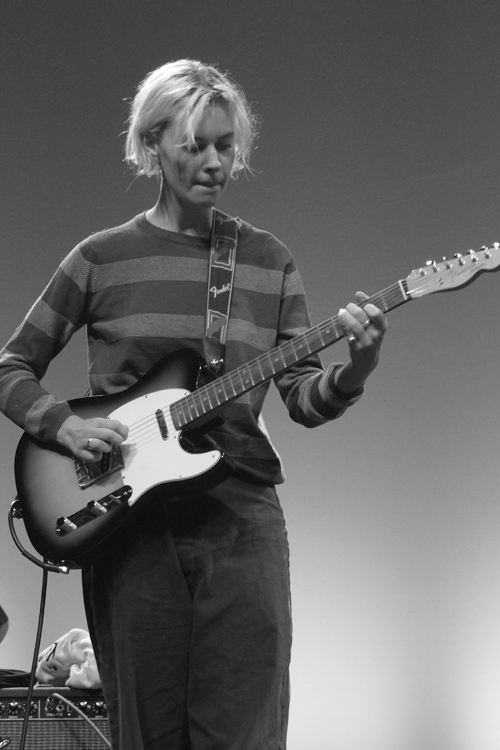
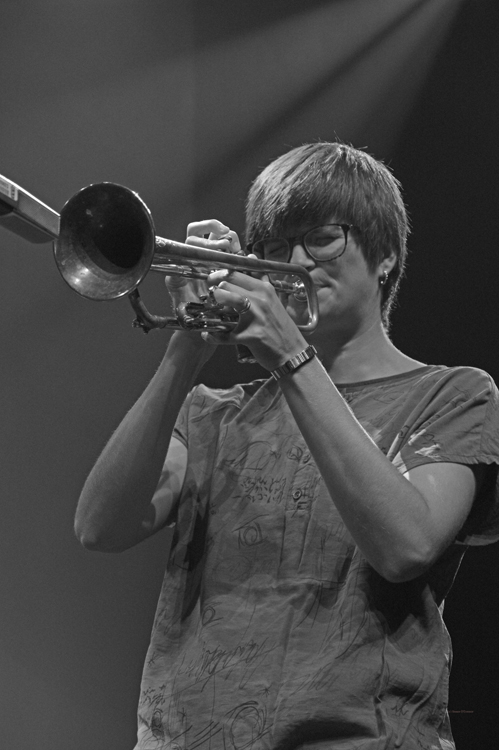
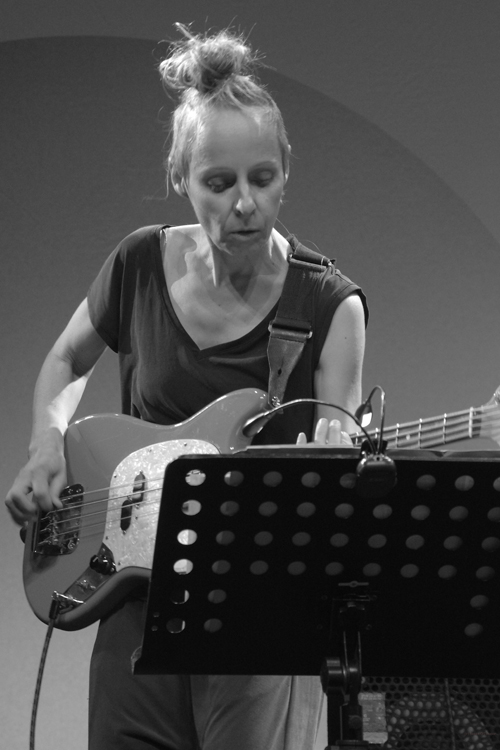
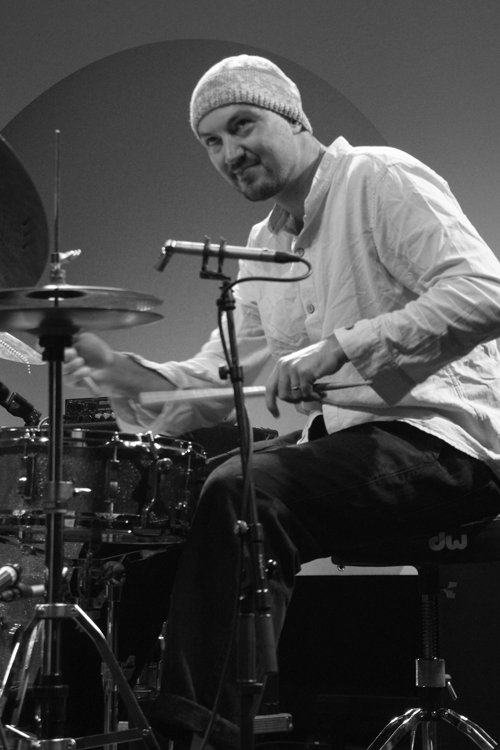
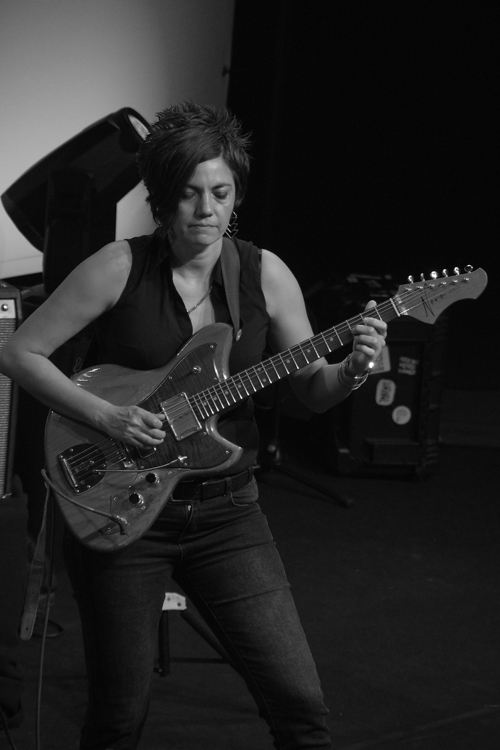
American guitarist Ava Mendoza’s Ancient to the Future program, the penultimate mainstage performance on the festival’s last night, fared better.
That was because the guitarist and British tenor saxophonist/flutist Xhosa Cole mostly functioned as background, leaving Moroccan vocalist and gimbri player Majid Bekkas, and American drummer Hamid Drake to sustain the links between Gnawa Music from the Maghreb and the musical concepts of Chicago’s Association for the Advancement of Creative Musicians.
As the guitarist produced Rock-like licks and Cole tough flute wafts or near-R&B reed bites, Drake’s churning rhythms joined almost seamlessly with the keening Moroccan vocals and string expositions. Sometimes taking on lute-like strums or acoustic bass guitar-like thumps Bekkas appeared to be handily moving chord suggestions back and forth with the others.
The connection was so profound that Mendoza’s occasional whammy bar asides or buzzing riffs never pierced the mesmerizing mood set up by the Gnawa textures, which were occasionally further animated with poised hand claps from Cole.
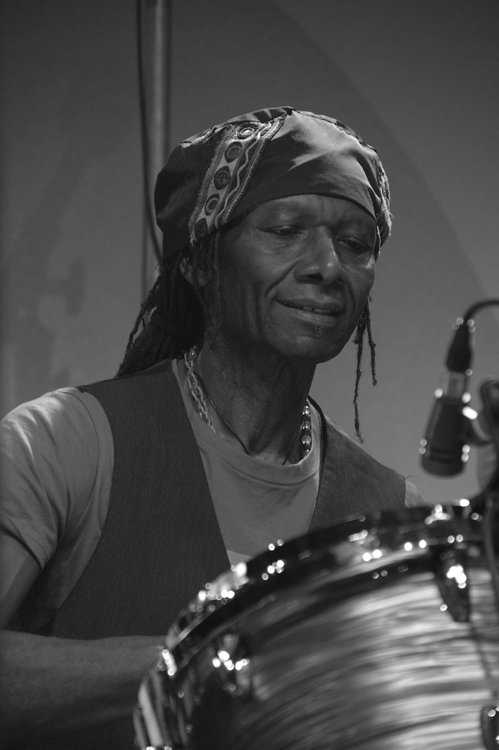
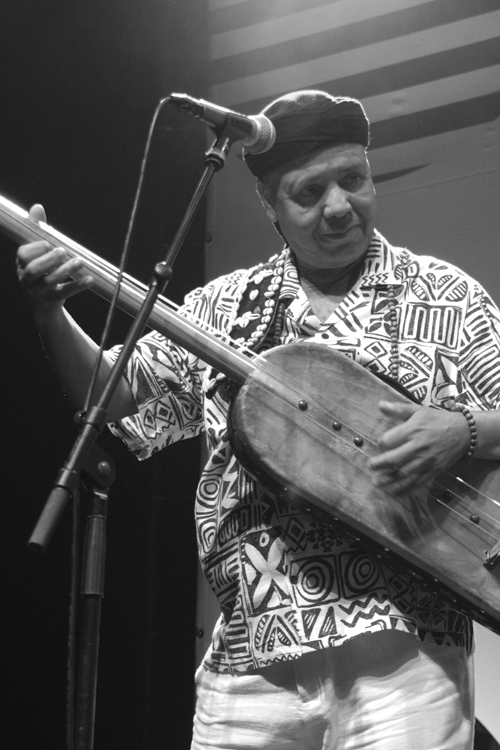
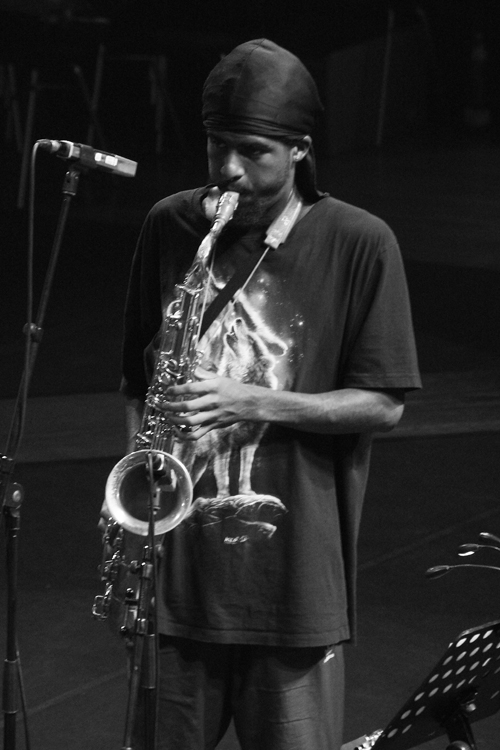
The mainstage performance earlier that same day neatly wrapped up all the musical currents that enlivened the festival. Bringing together Jazz improvisation, international players, a touch of electronics and percussion emphasis was Korean drummer Sun-Mi Hong’s Bida Orchestra that featured Scottish trumpeter Alistair Payne, Danish alto saxophonist Mette Rasmussen, American bass and tenor saxophonist John Dikeman, Belgian Jozef Dumoulin playing acoustic and electric piano, and Irish bassist John Edwards, who had been part of an extended one-on-one improvisation with tenor saxophonist Camila Nebbia that morning.
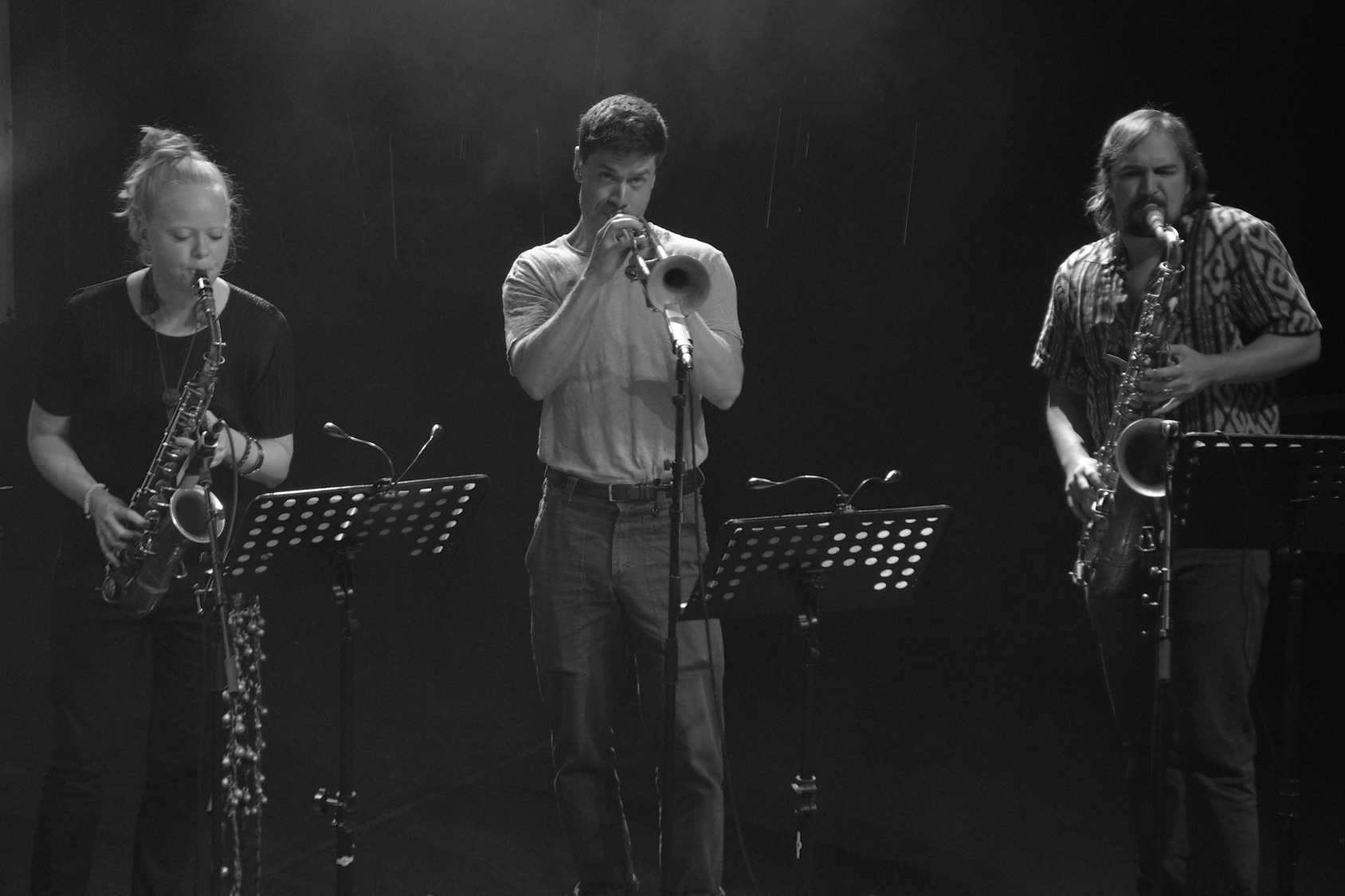
Moving on from hard ruffs and unaffected timekeeping from the drummer, unison horn projections soon gave way to round-robin solos from each horn player, mixing half-valve trumpet work, alto saxophone split tones and bass sax tongue slaps. Fastening on a menacing vamp propelled by slippery piano comping, woody double bass thumps and positioned mallet work from the drummer, a pyramid of Payne’s internal squeezes, Rasmussen’s acidic squirts and Dikeman’s snorting ostinato sped up the melody and vibrated it into a snaky, vibrated forward motion. Later an arco bass introduction and Dikeman’s yelps and tongue stops, this time on tenor saxophone, mixed with keyboard clips and string power pumps to shape the narrative into a polyphonic version of modern syncopation.
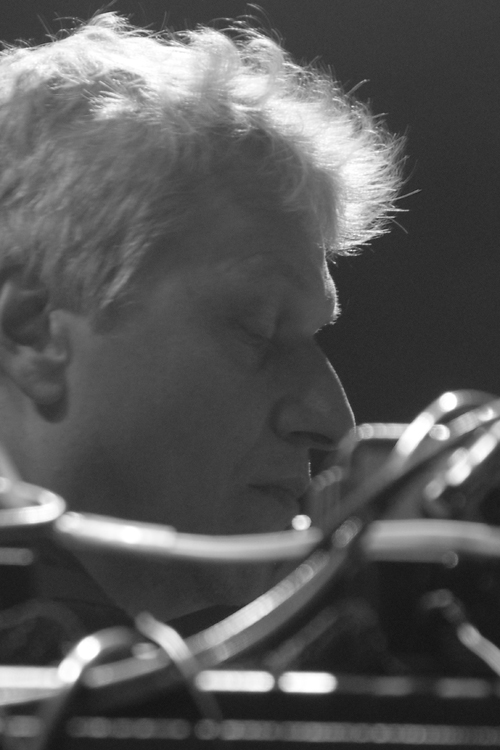
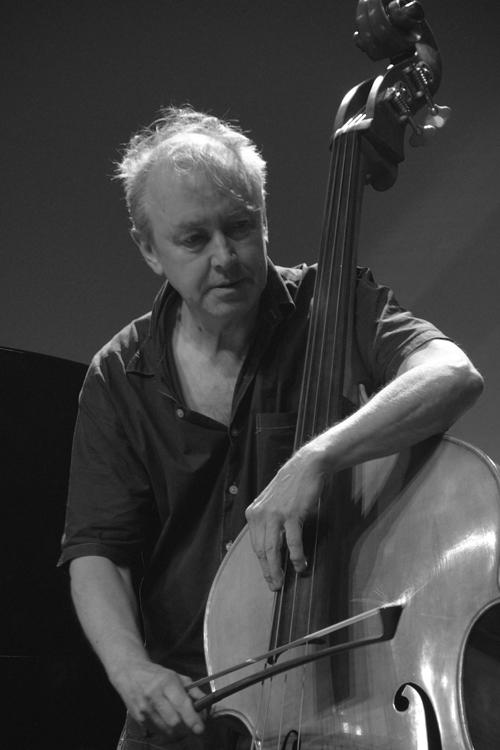
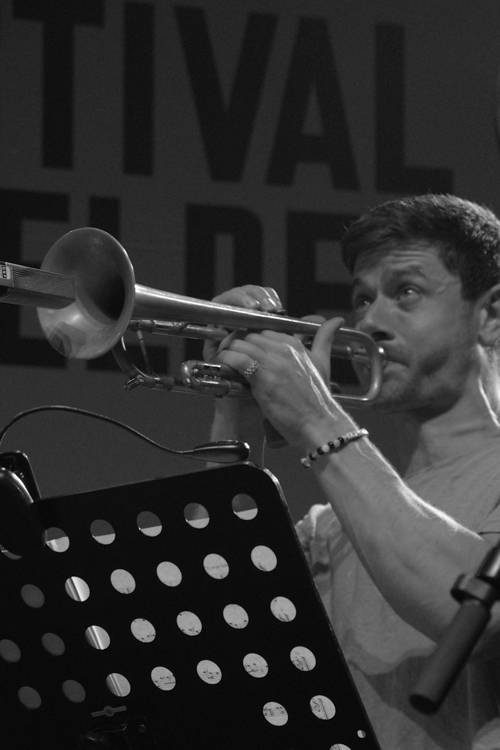
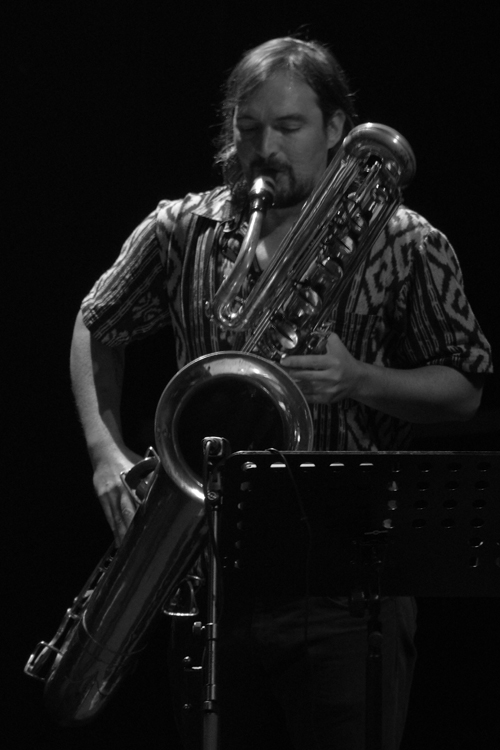
For the final set of the festival, a meeting of Hong and Drake jammed into a space at the Nexus’ crowded bar served as a coda to the Saalfelden proceedings. Expressing a variety of beats and tempos, the performance was prevented from being an empty display of drum booms and rhythm thumps by the flutter-tonguing, triplet sprays and tonguing of trumpeter Luis Vicente.
While there was some slick chording added by guitarist Kale Kalima just before the set ended, it was Vicente who preserved linear motion. Not only did his super-fast shakes and plunger smears provide variety and movement to the percussion projections, but later on he further diversified the sounds by vibrating semi-exotic bird calls from a slide whistle, and finally by shaking miniature bells to contrast with the perfectly balanced claps, rolls and rumbles from the matched drum kits.
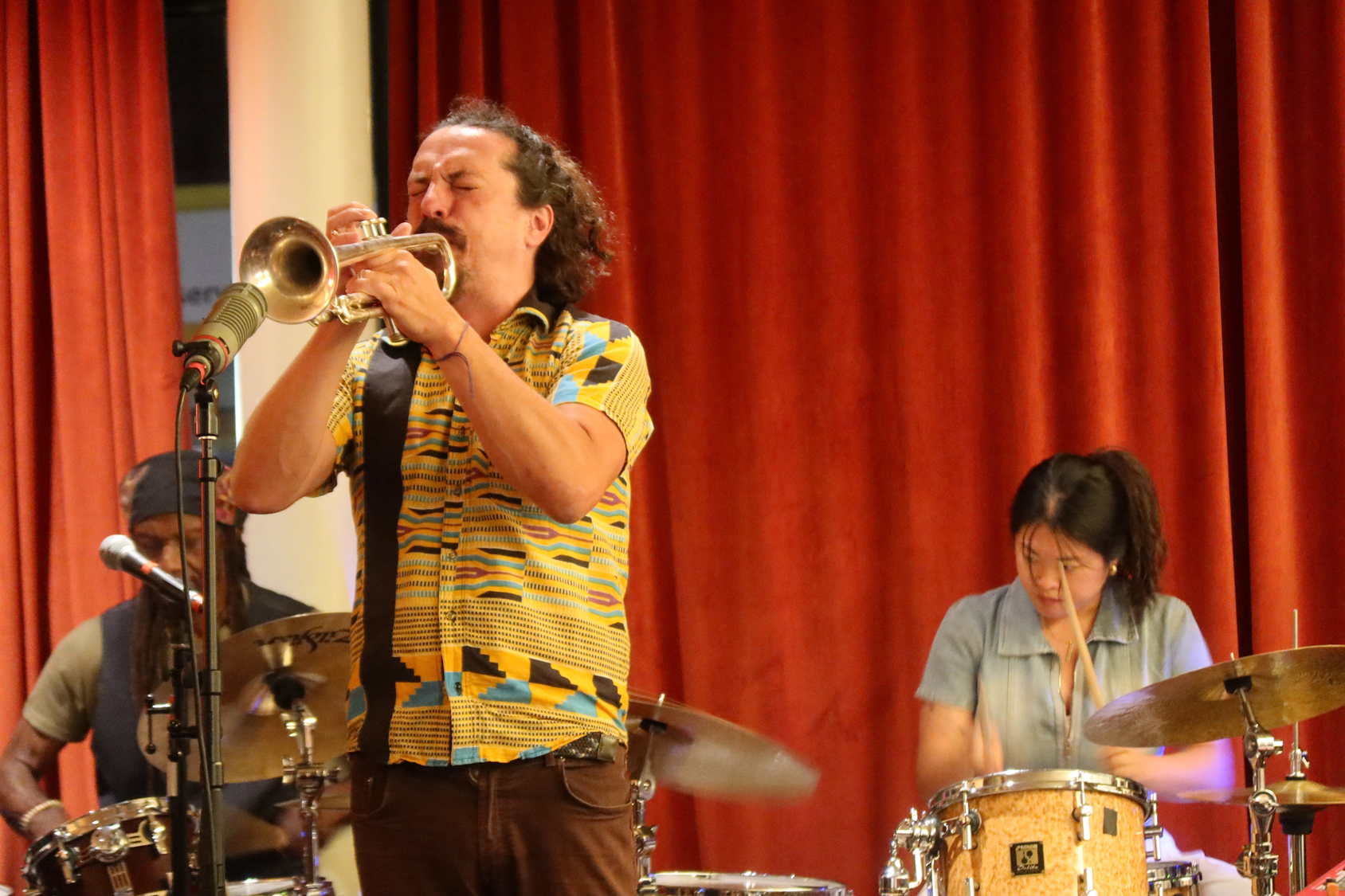
Far-ranging, Saalfelden 2025 featured even more concerts at an open air park, concerts following hikes in the nearby mountains, and as part of unexpected flash mobs. Conflicting time slots made it impossible to attend all. However with the breadth of programming on offer this year, it seems obvious that the festival has avoided the midlife crises that affect some presentations as well as people.
Visit the individual Artists section for CD reviews and more photos, updated continuously.
High-resolution digital copies are available. Contact [email protected]
